Kurashiki is a charming town located in Okayama Prefecture, Japan, known for its well-preserved Edo-period (17th-19th century) buildings and its unique blend of history, culture, and art. We have visited it one afternoon taking a local train from Okayama (around 15 minutes ride, the local train is included in a JR pass deal), you can also have a few hours stop if you travel from Hiroshima or Osaka (you will need to take Shinkansen to Okayama first).
We have come to Kurashiki just for an afternoon as a relaxing trip from Okayama. The visit was part of our 7 days JR pass itinerary, if you want to see the planning of the whole our journey around Japan check out this post:
My 12 days itinerary around Japan with 7 days JR Pass
Kurashiki is a small compact town and if you don’t have plenty of time, it’s ok to spend here few hours in the morning or afternoon. Due to many museums, artisanal shops and cute restaurants, you won’t be bored here neither if you choose to stay here for entire day and explore the area in a relaxed pace.
One of the main attractions in the city is the Bikan Historical Quarter, also known as the Bikan Chiku which is a beautifully preserved historical district located in Kurashiki. The district is convenient 10 minutes walk from the train station. Historically, Kurashiki was a prosperous center of trade and commerce. Many of the Edo-era buildings you can see in Bikan served as storehouses for goods like rice, cotton, and indigo, and some also housed merchant families.
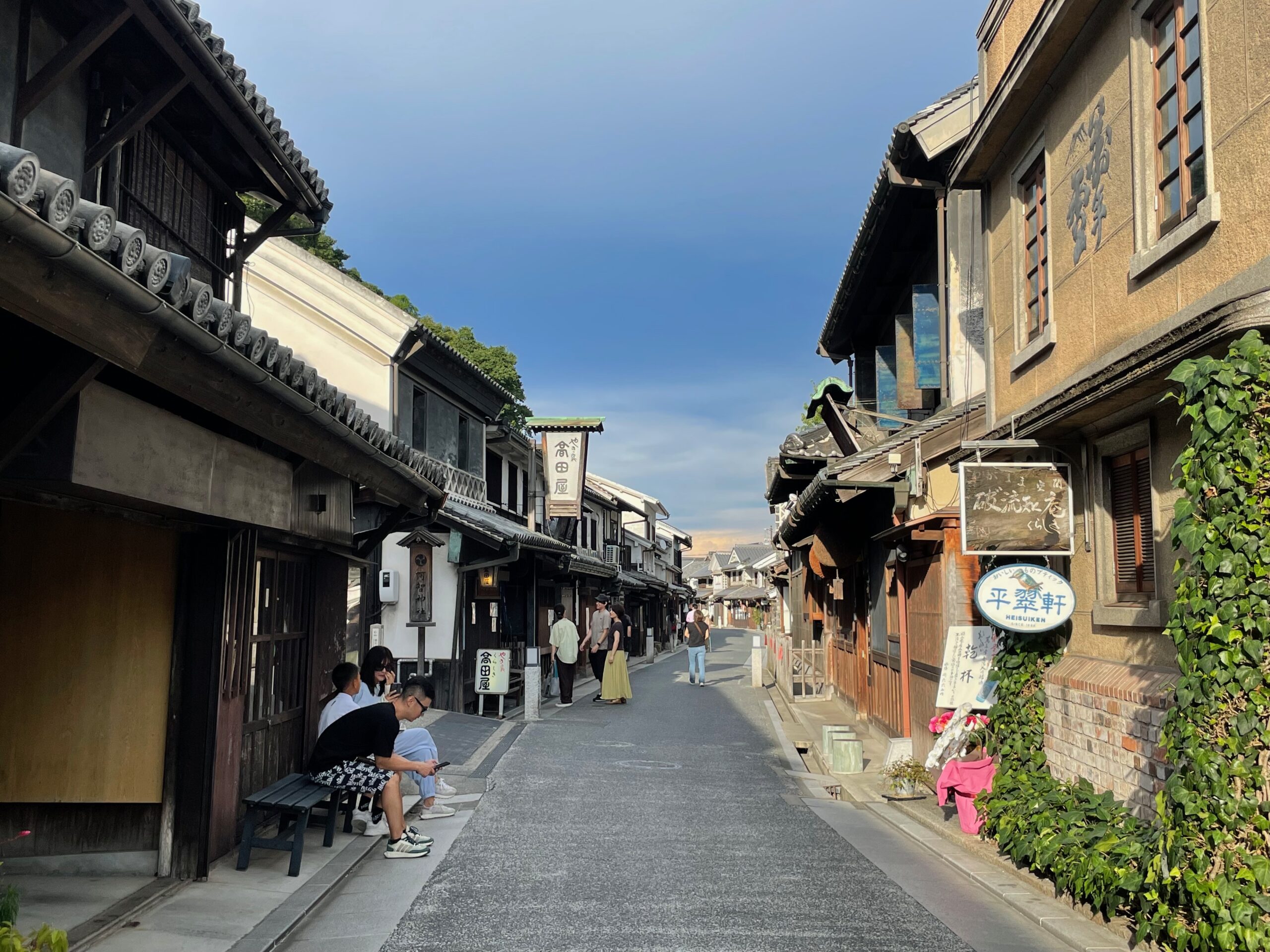 |
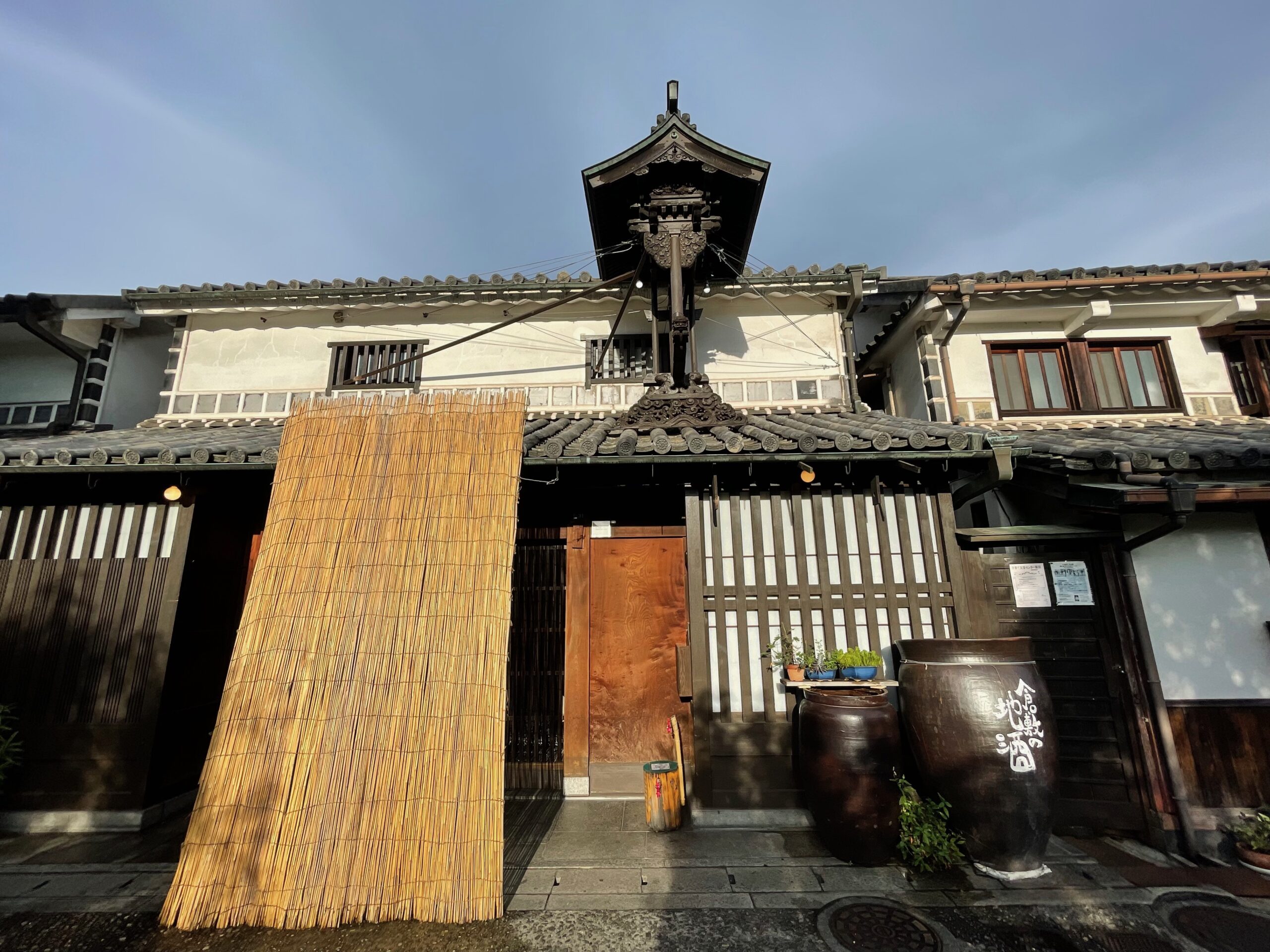 |
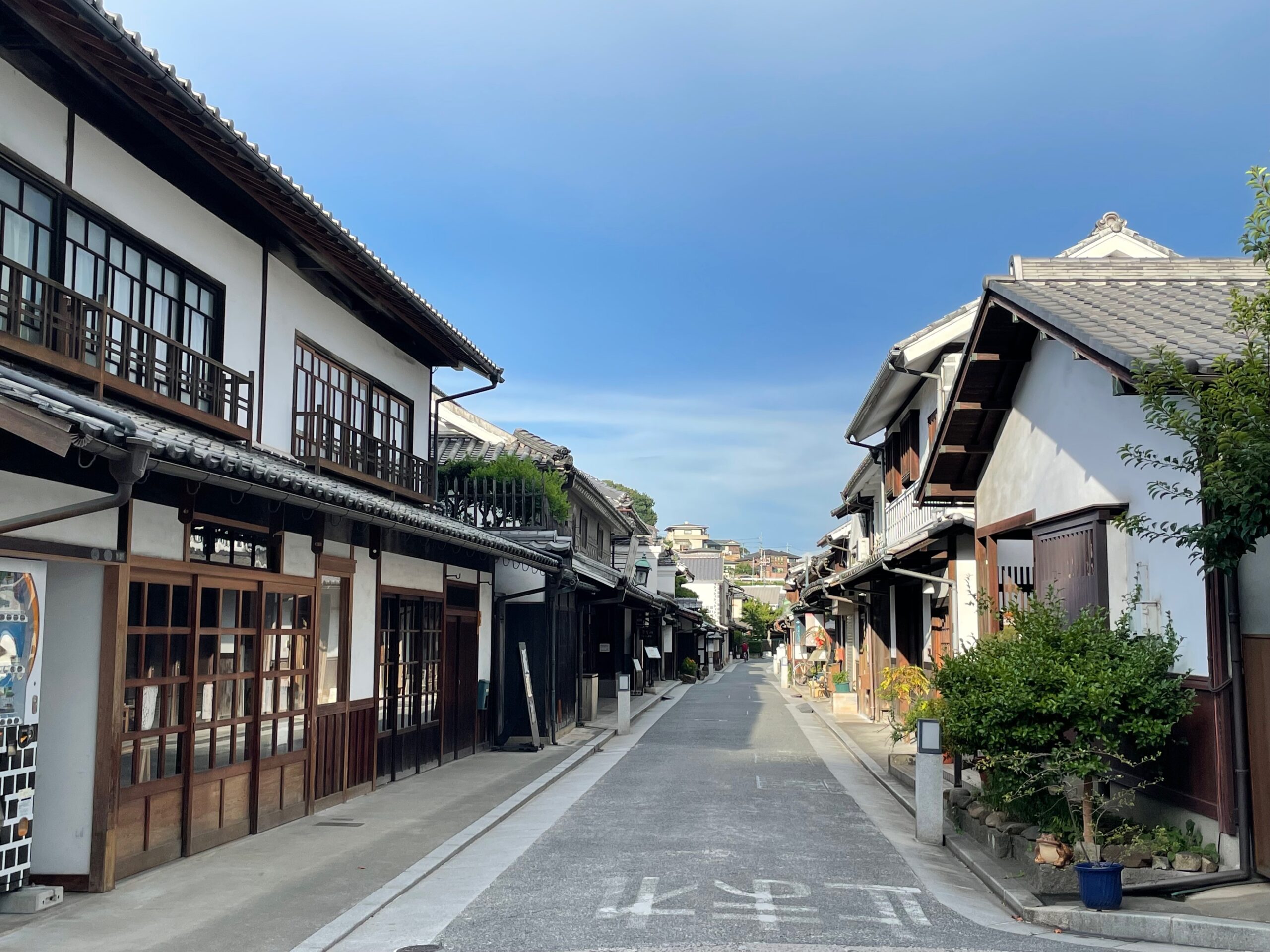 |
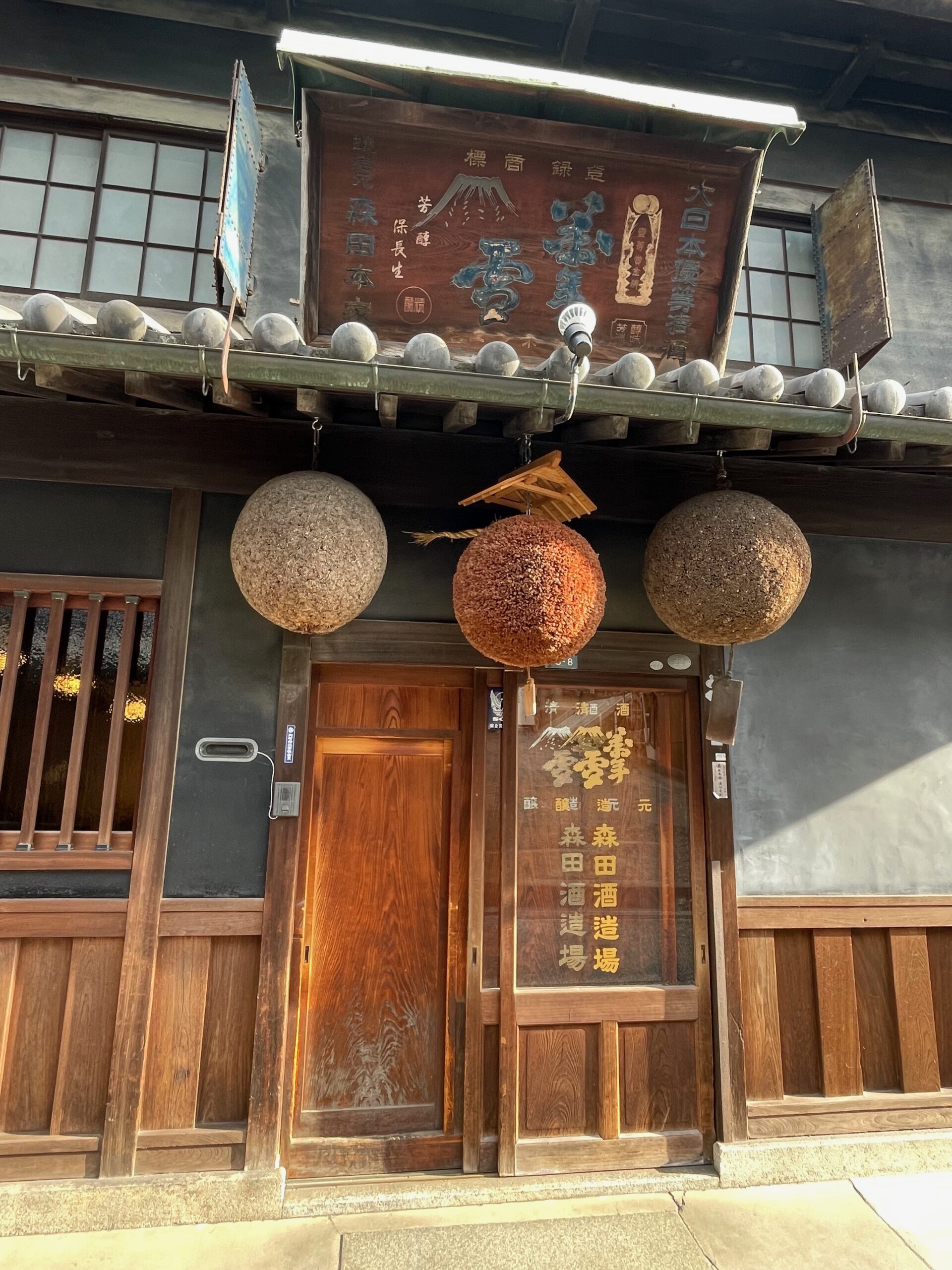 |
I recommend having a long relaxing walk around the quarter to admire traditional wooden Edo-period buildings (17th-19th century) including former storehouses, merchant homes, and warehouses. Many of these buildings are very well maintained and preserved their historical architectural details, such as black-tiled roofs, wooden lattice windows, and earthen walls. This area is heaven if you’re interested in Japanese history, architecture or you’re an avid photographer (for best pictures come early in the morning when shops and museums are still closed and the town is empty or before sunset for beautiful golden hour light).
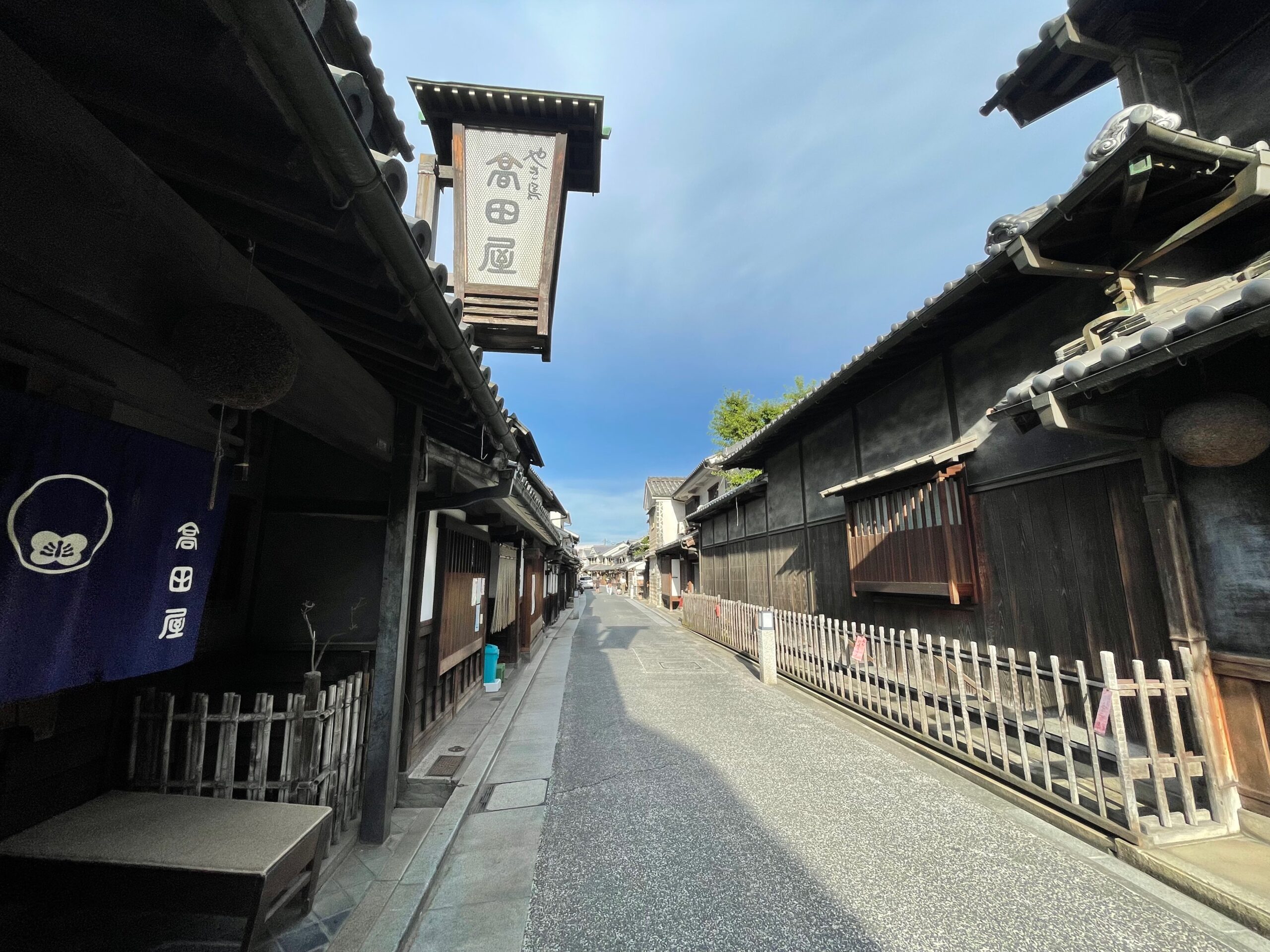 |
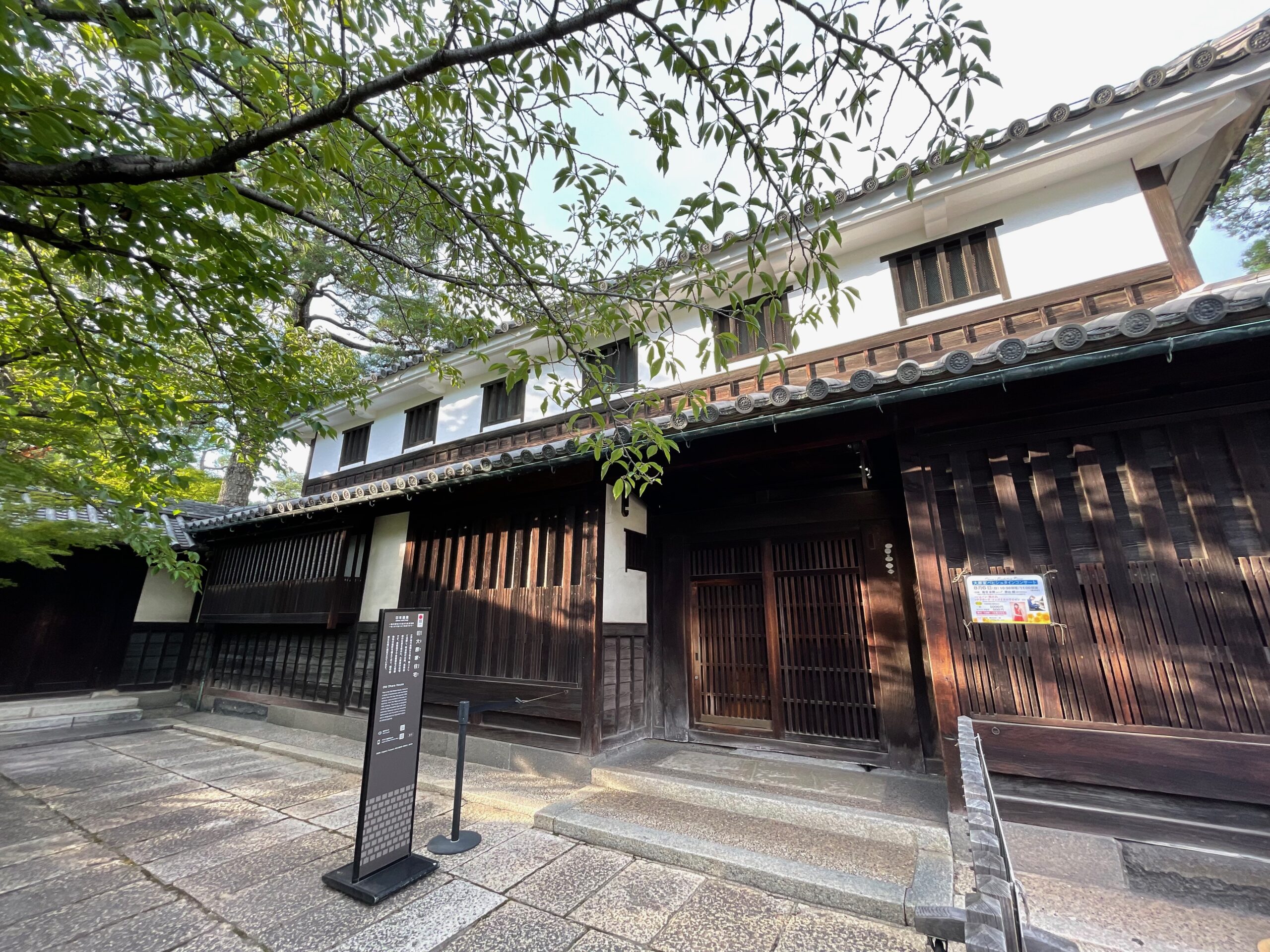 |
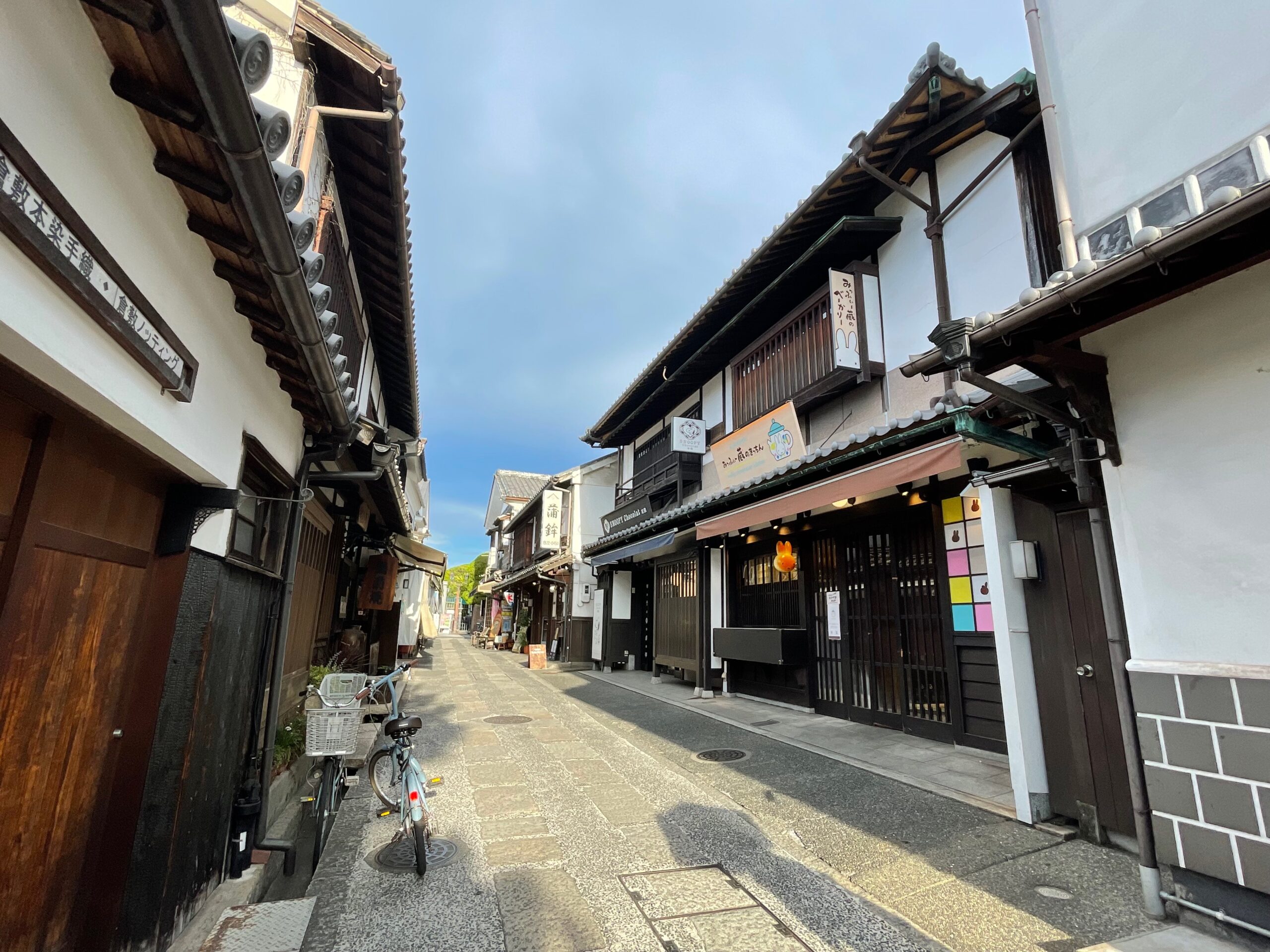 |
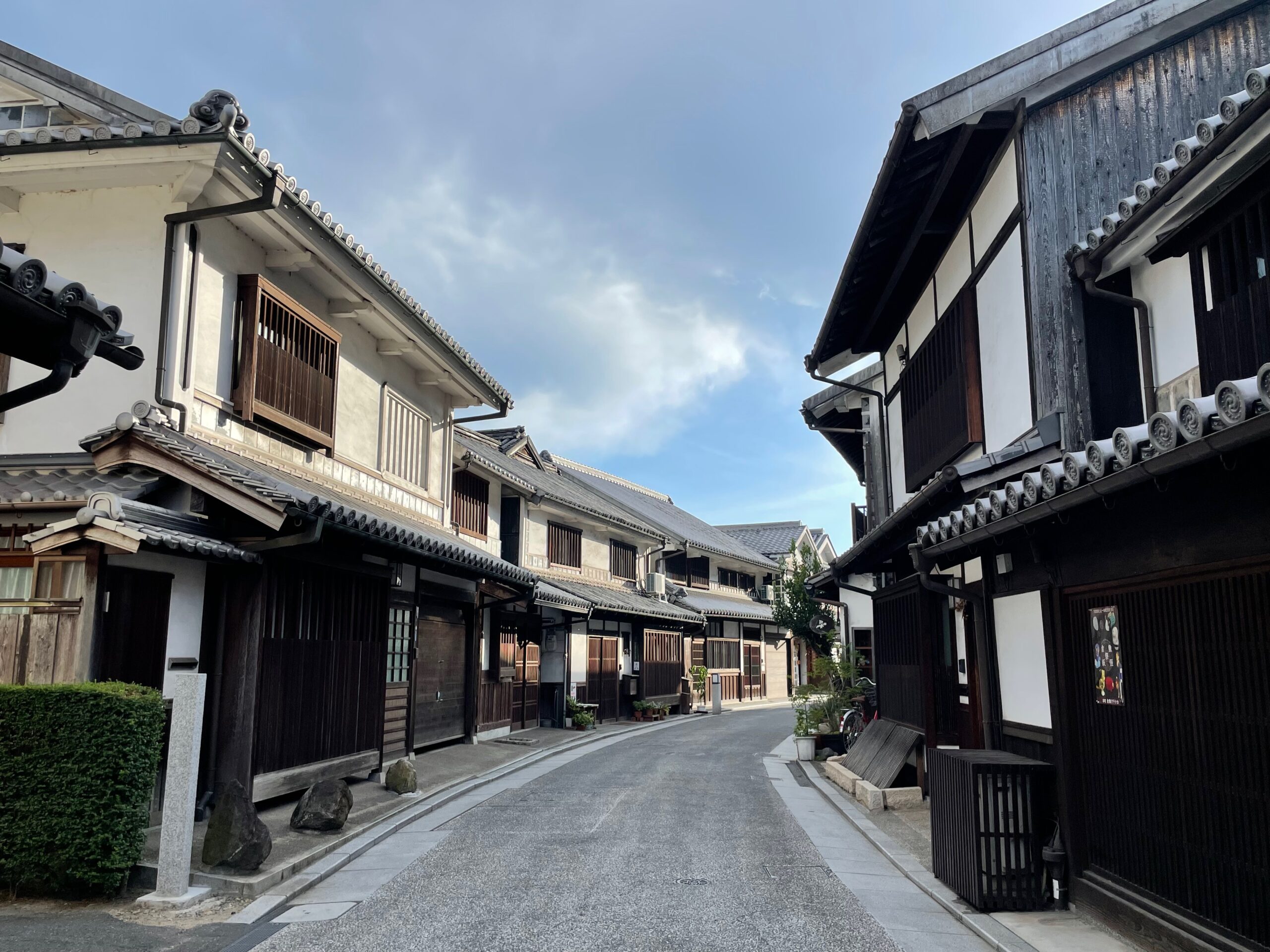 |
The Bikan district is also known as “Little Venice” of Japan as it is crisscrossed by willow-lined canals. The beautiful stone bridges and historical houses on both sides of the canals add even more to the district’s picturesque ambiance. The reflections of the old buildings in the calm waters of the canals create a serene and timeless atmosphere.
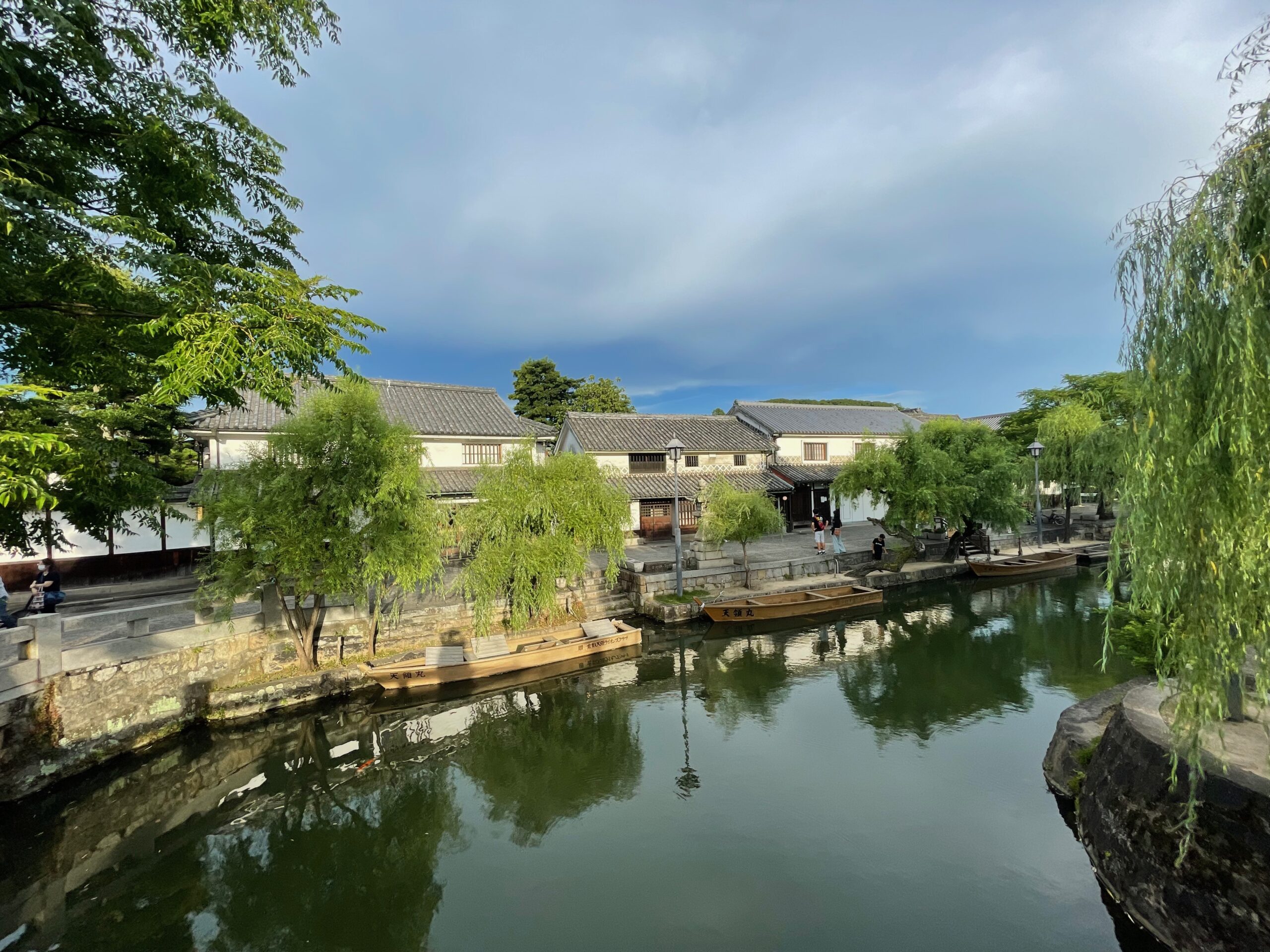 |
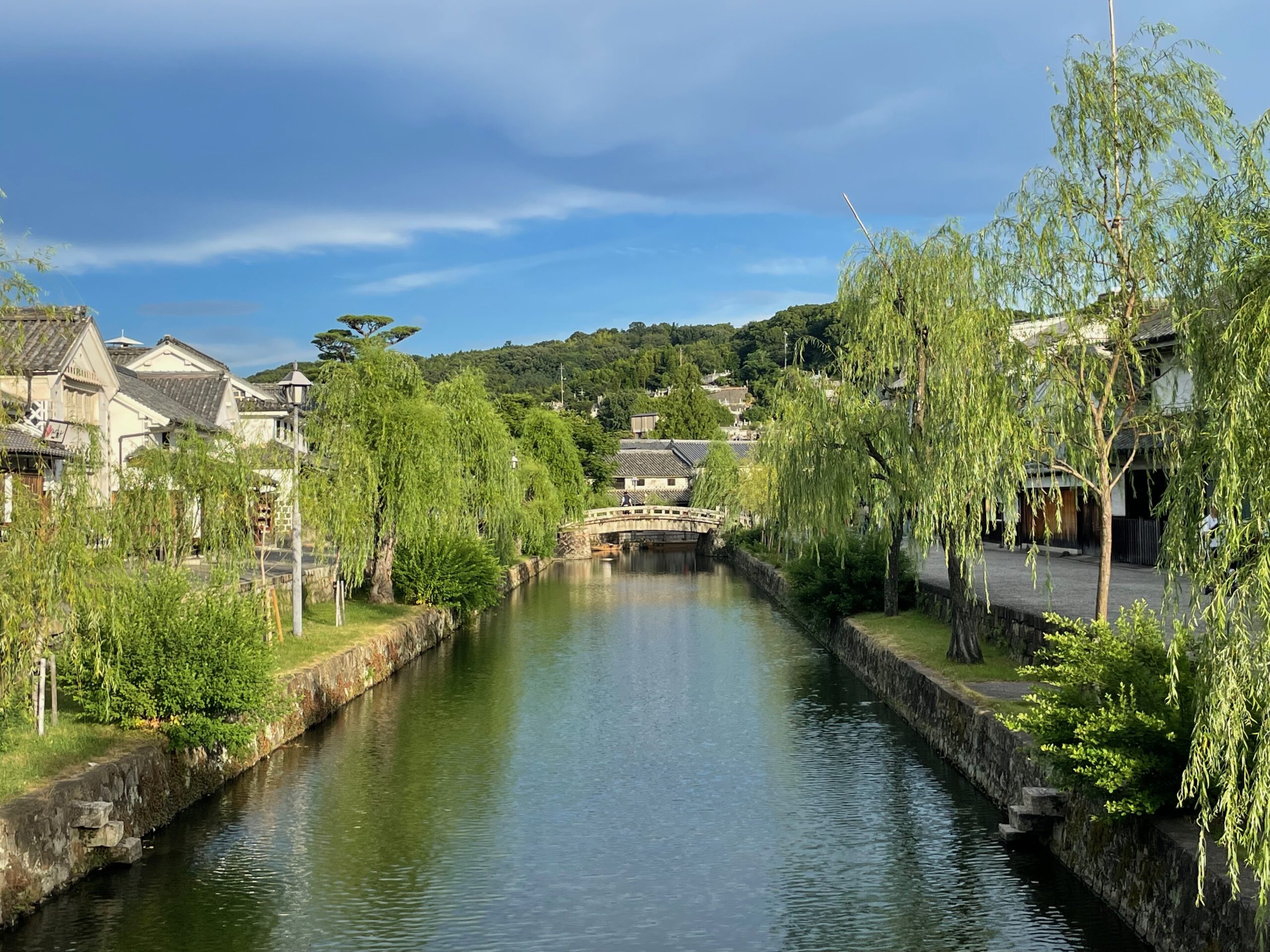 |
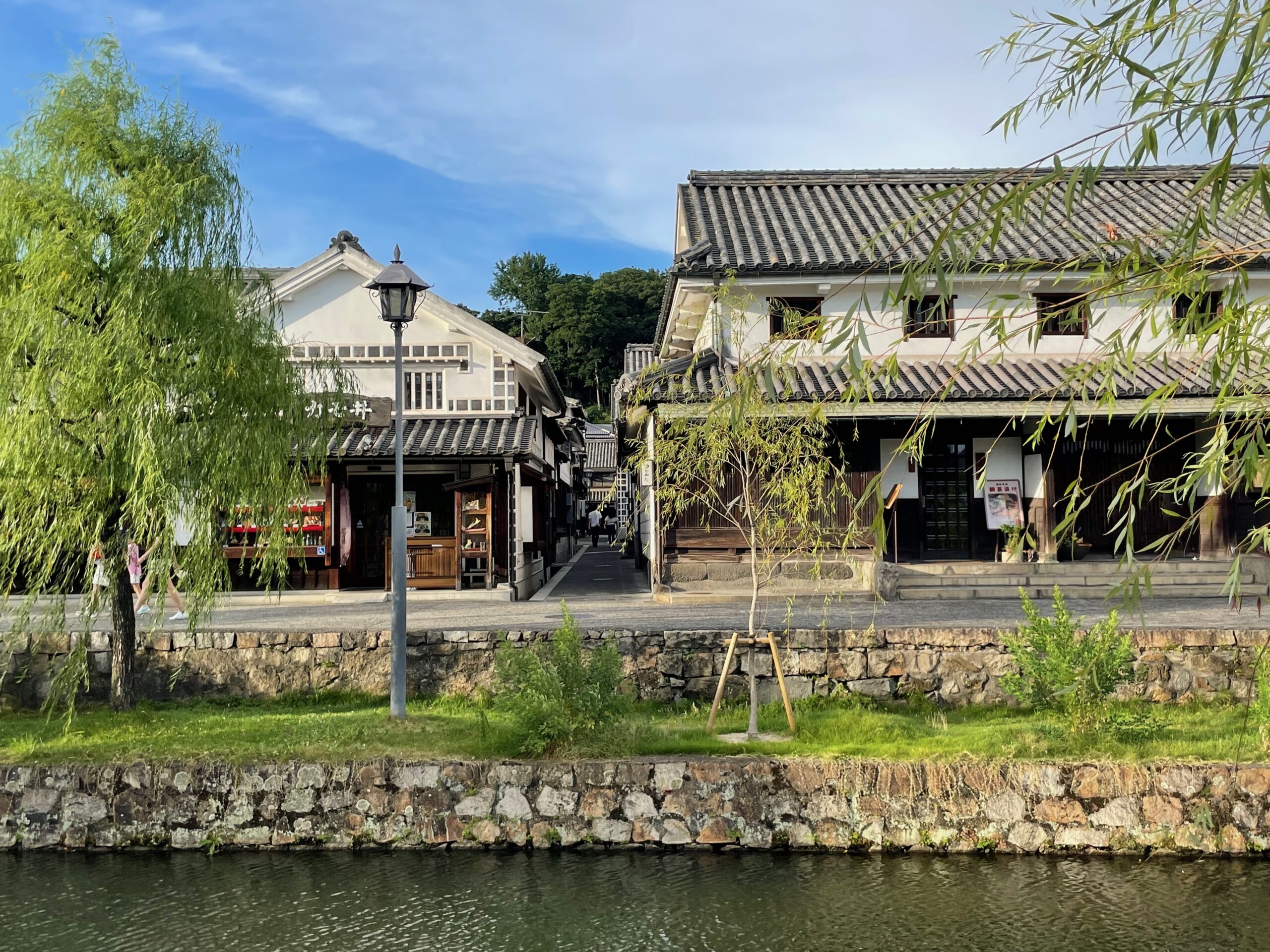 |
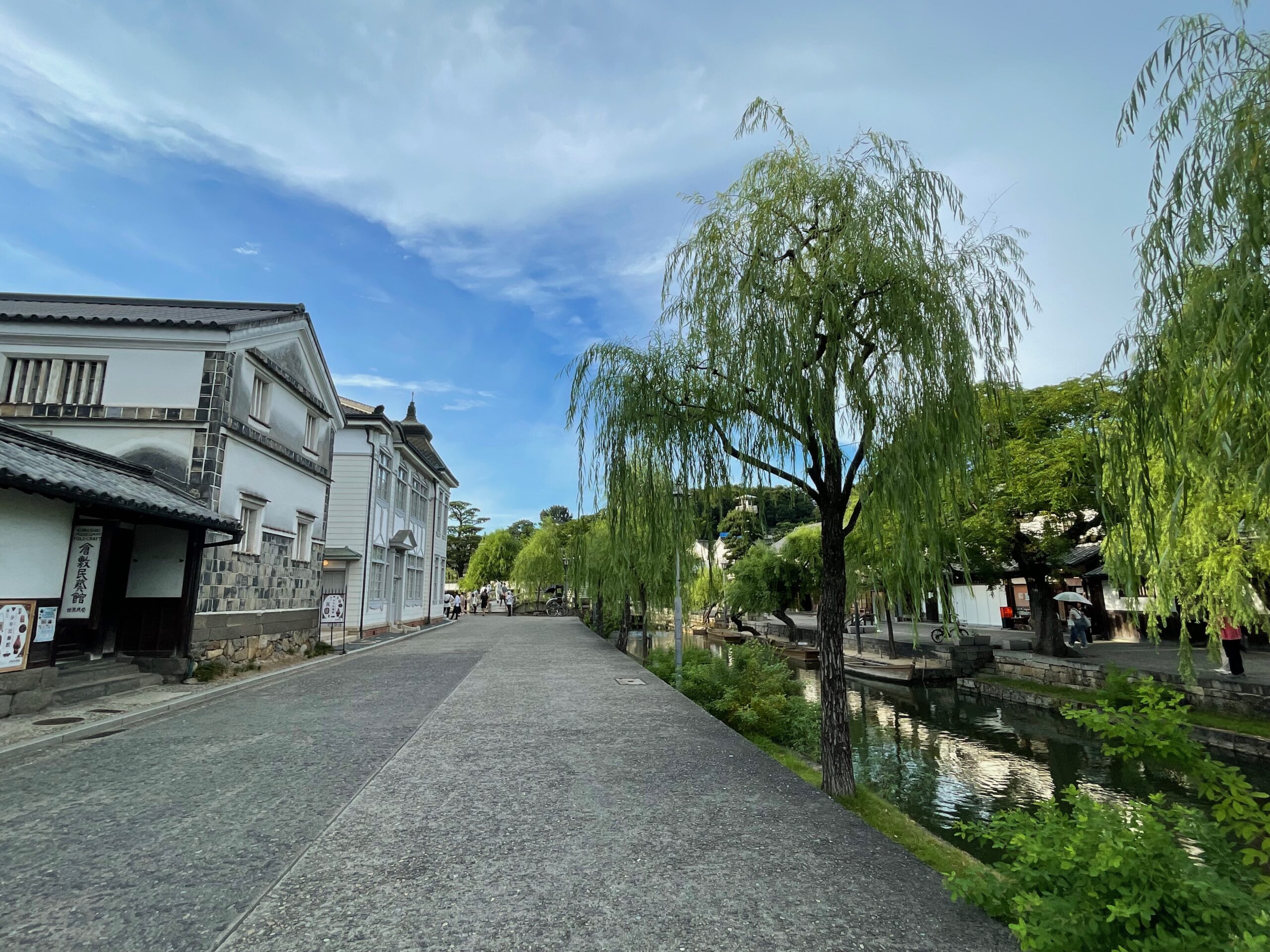 |
When strolling around Bikan, we have noticed that one of the buildings offers guided tours. The building which intrigued us is Inoue House and for a small entrance fee you can stroll through the interiors of traditional Edo house and learn its history from the descendant of the influential merchant family who lived centuries ago in Kurashiki – yes, the property remains in the hands of the family though all this time! The building is a well-preserved example of the large-scale Japanese merchant house. Inside you can see original interiors and Japanese style inner gardens. This was an absolute highlight for us!
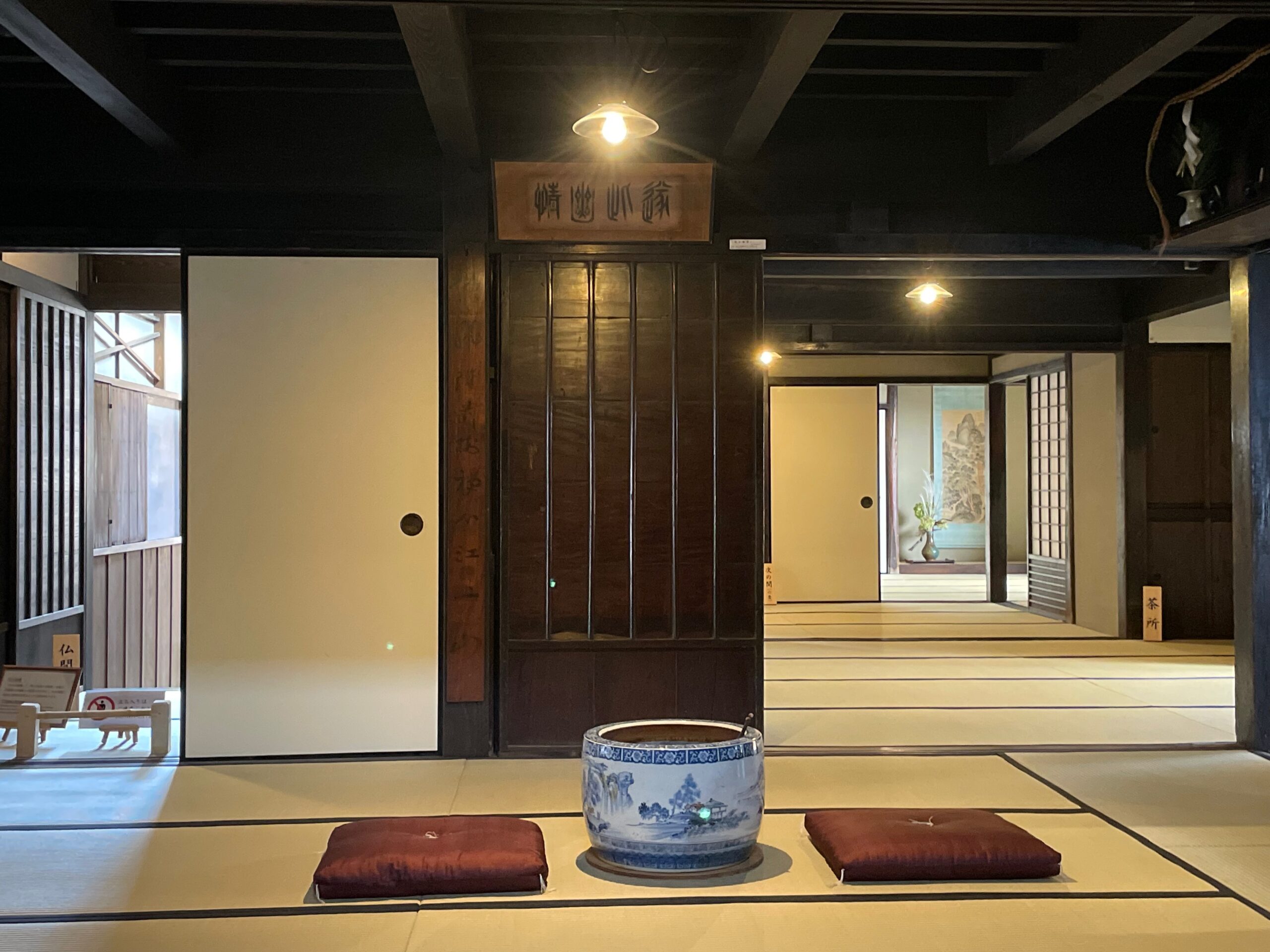 |
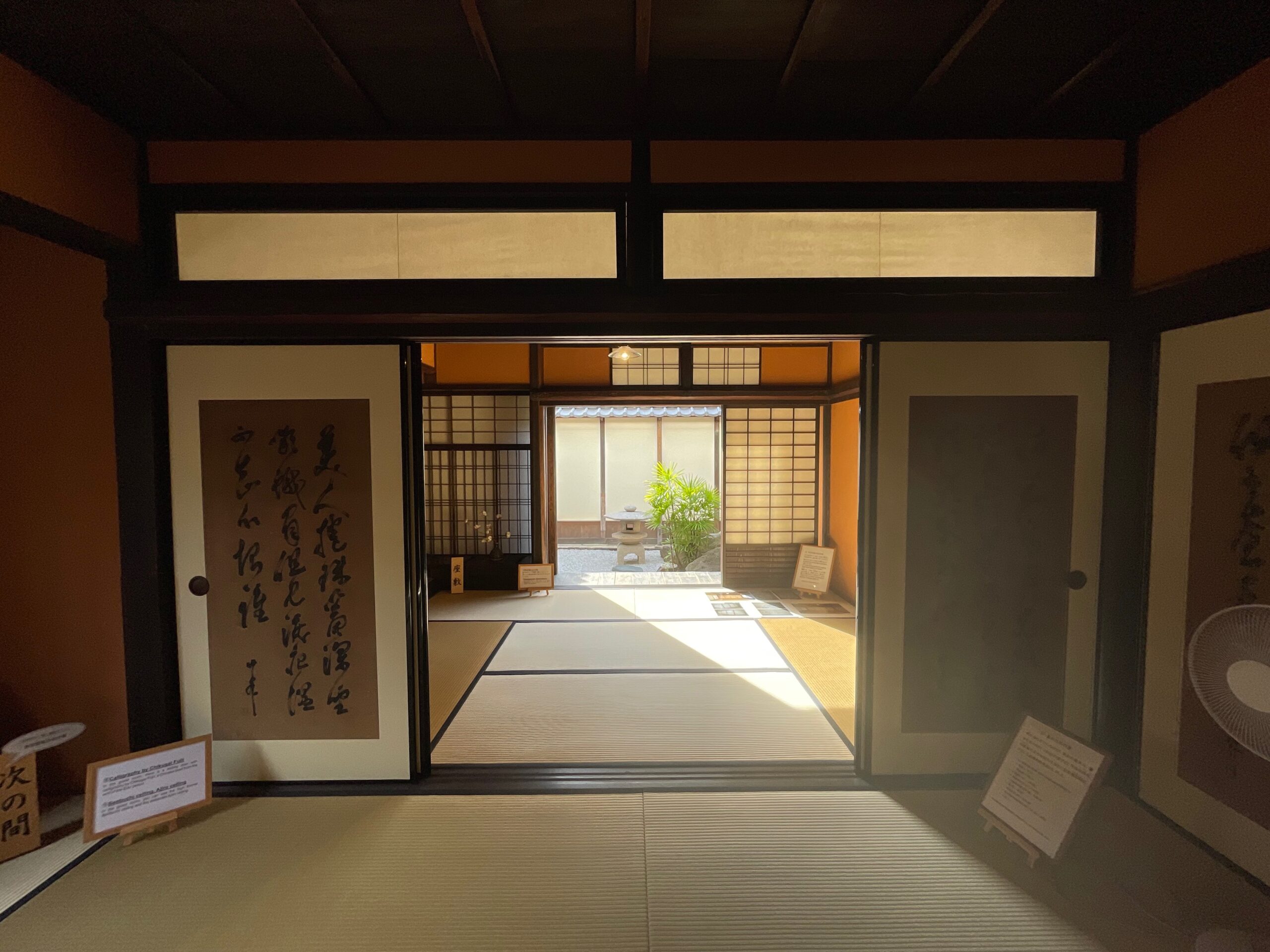 |
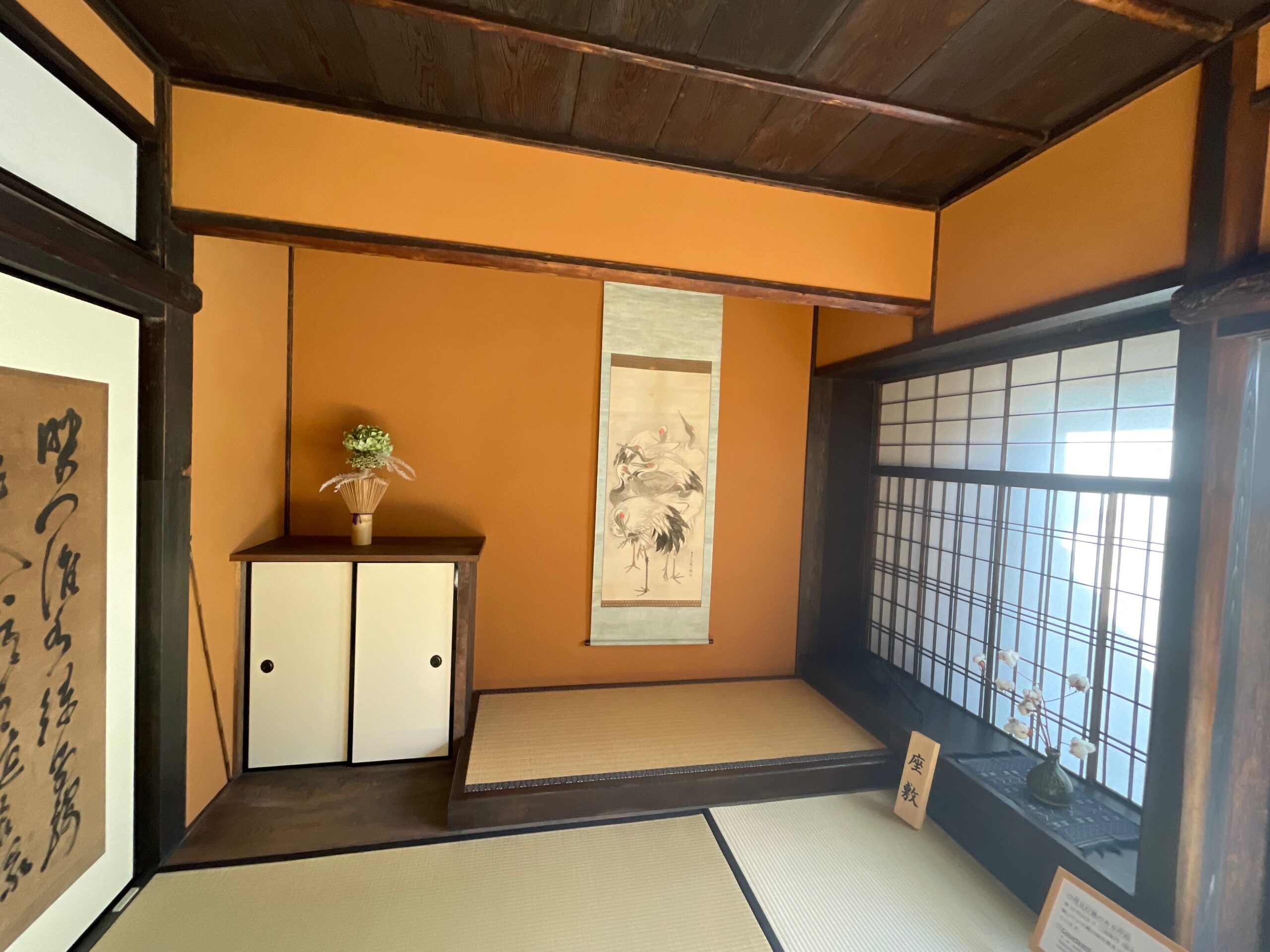 |
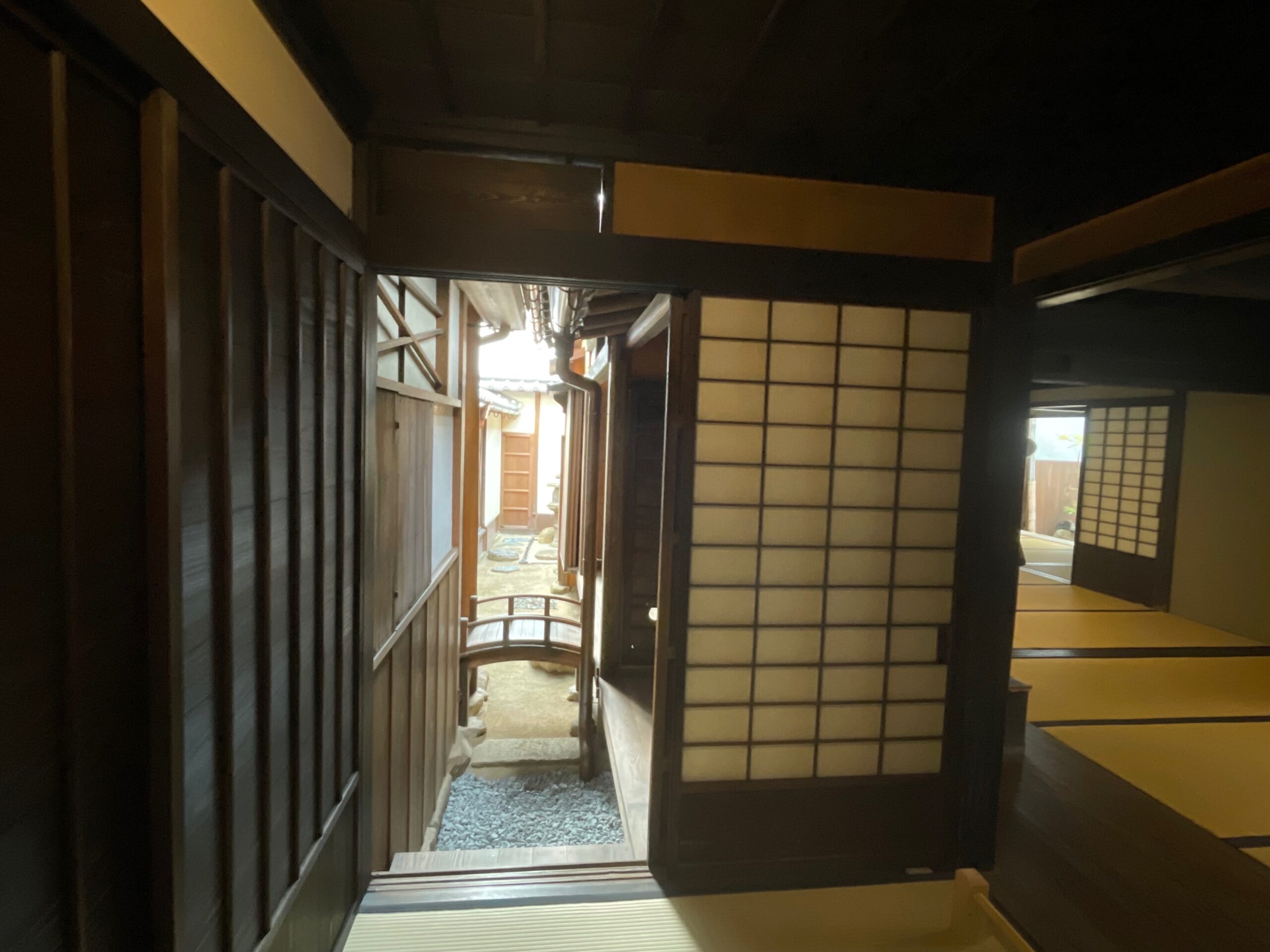 |
Bikan area is also a home to many museums where you can learn about Japanese folkcrafts, see archeological artefacts from Kurashiki region or admire Japanese modern art.
If you’re planning to include in your itinerary some of the Kurashiki’s museums, you may consider (apart of Inoue House which is an absolute must in my opinion):
- Ohara Museum of Art which is one of Japan’s oldest private art museums, it houses an extensive collection of Western and Japanese art;
- Kurashiki Folkcraft Museum which exhibits a diverse range of folk art, including ceramics, textiles, masks, and dolls, offering insights into Japan’s rich cultural heritage);
- Ivy Square Art Museum, this is a Japanese modern art museum;
- Kurashiki Archaeological Museum which exhibits ancient artefacts such pottery and everyday tools from Kurashiki’s region.
Pro tip: I recommend visiting museums at the beginning of your visit, especially if you come in the afternoon, the sites close around 5-6pm so make sure you organize your itinerary accordingly so you won’t miss anything.
Apart from Bikan area, I also recommend to have a few minute easy climb on a small hill where the Shinto Achi Shrine is located (few hundred meters away from Kurashiki’s historical district). Interestingly, grounds of the shrine are home to the largest Akebono wisteria tree in the country, and when walking around you can buy Achi no Fujimori charms containing wisteria seeds which are symbolizing long life and health.
From the shrine’s gardens you have stunning panoramic views at the Kurashiki. It is also a popular spot to watch the sunset. However, if you want to purchase the wisteria charms or just visit the shrine when it’s open, try to arrive before 4pm.
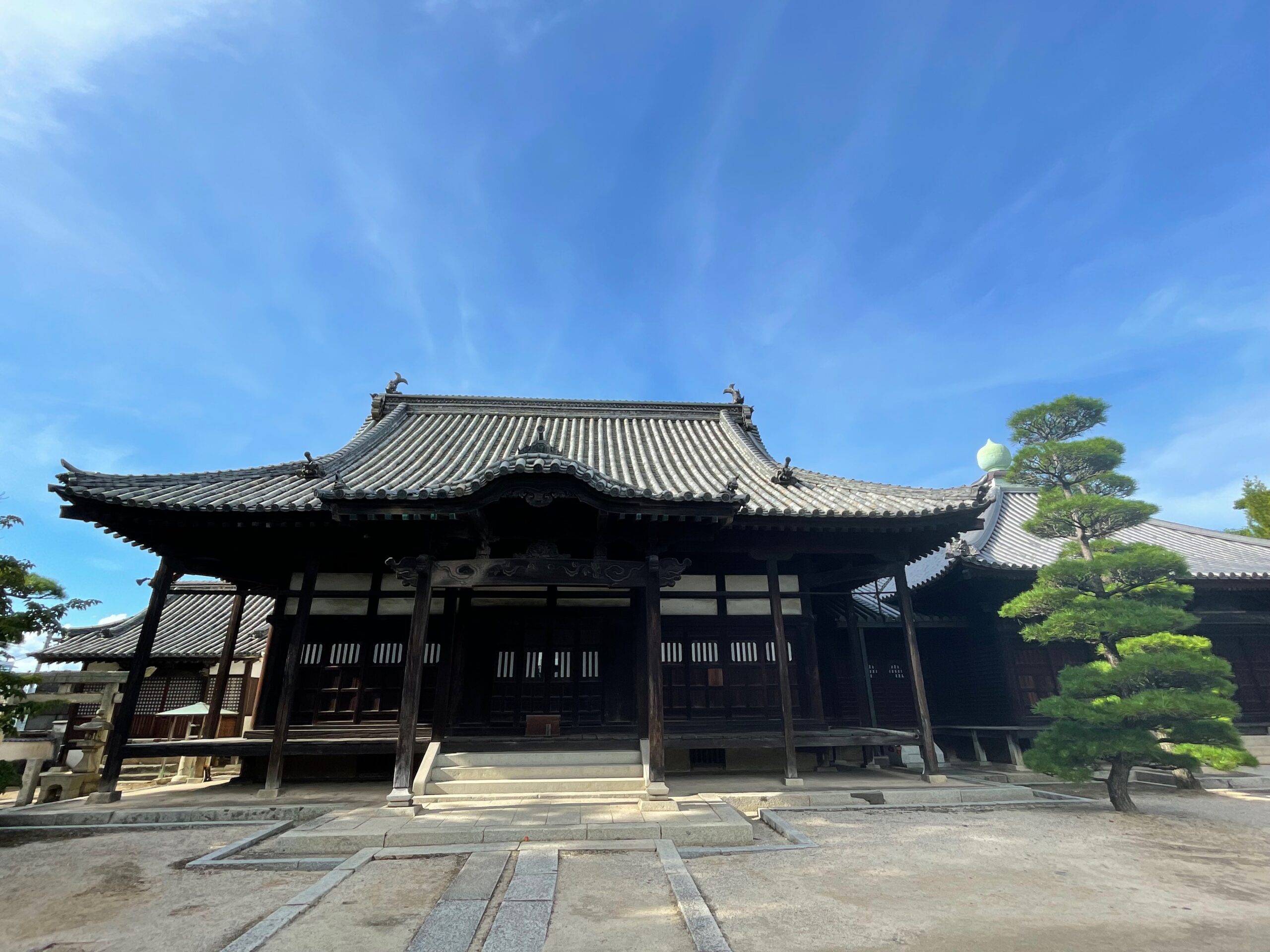 |
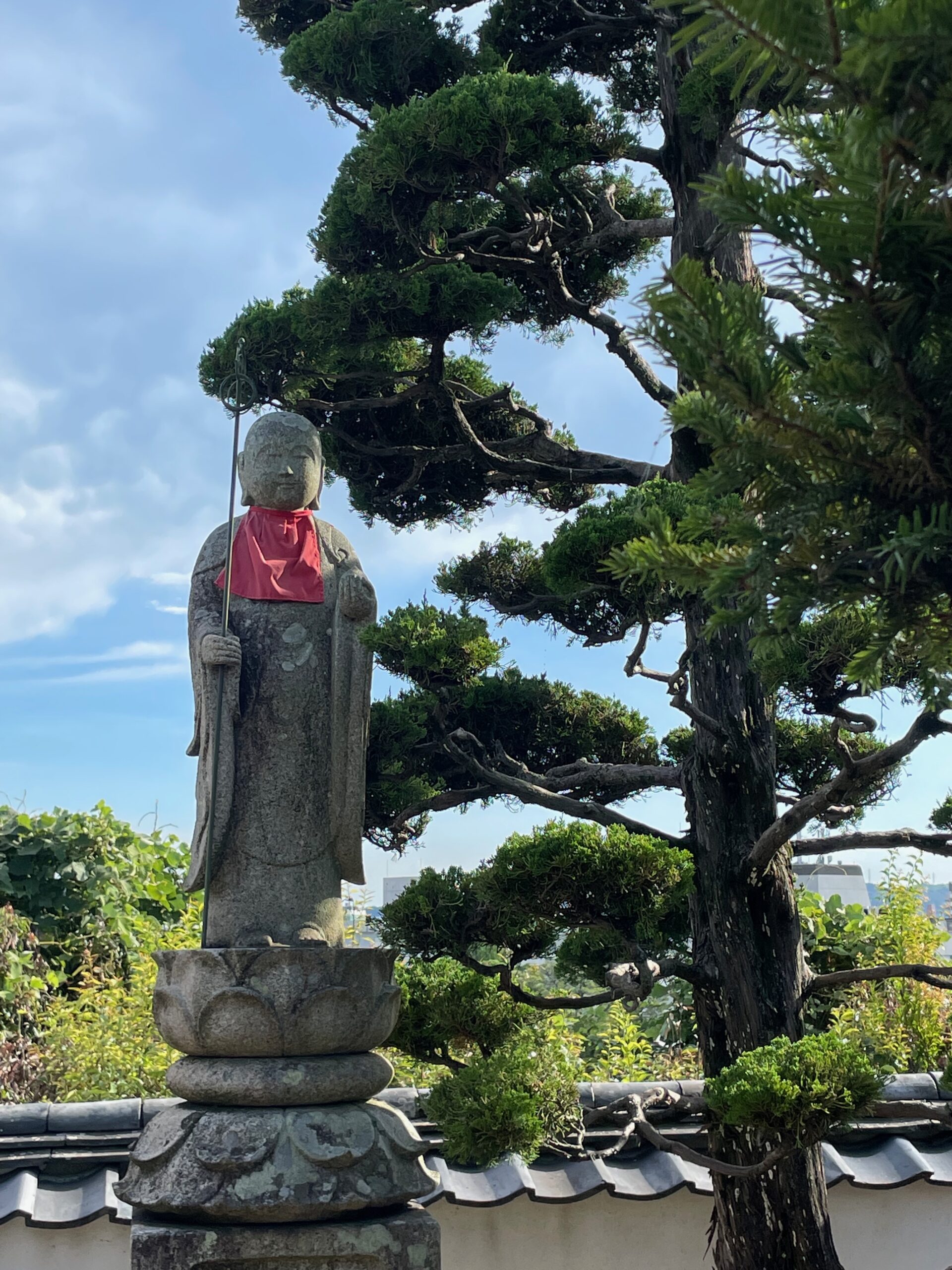 |
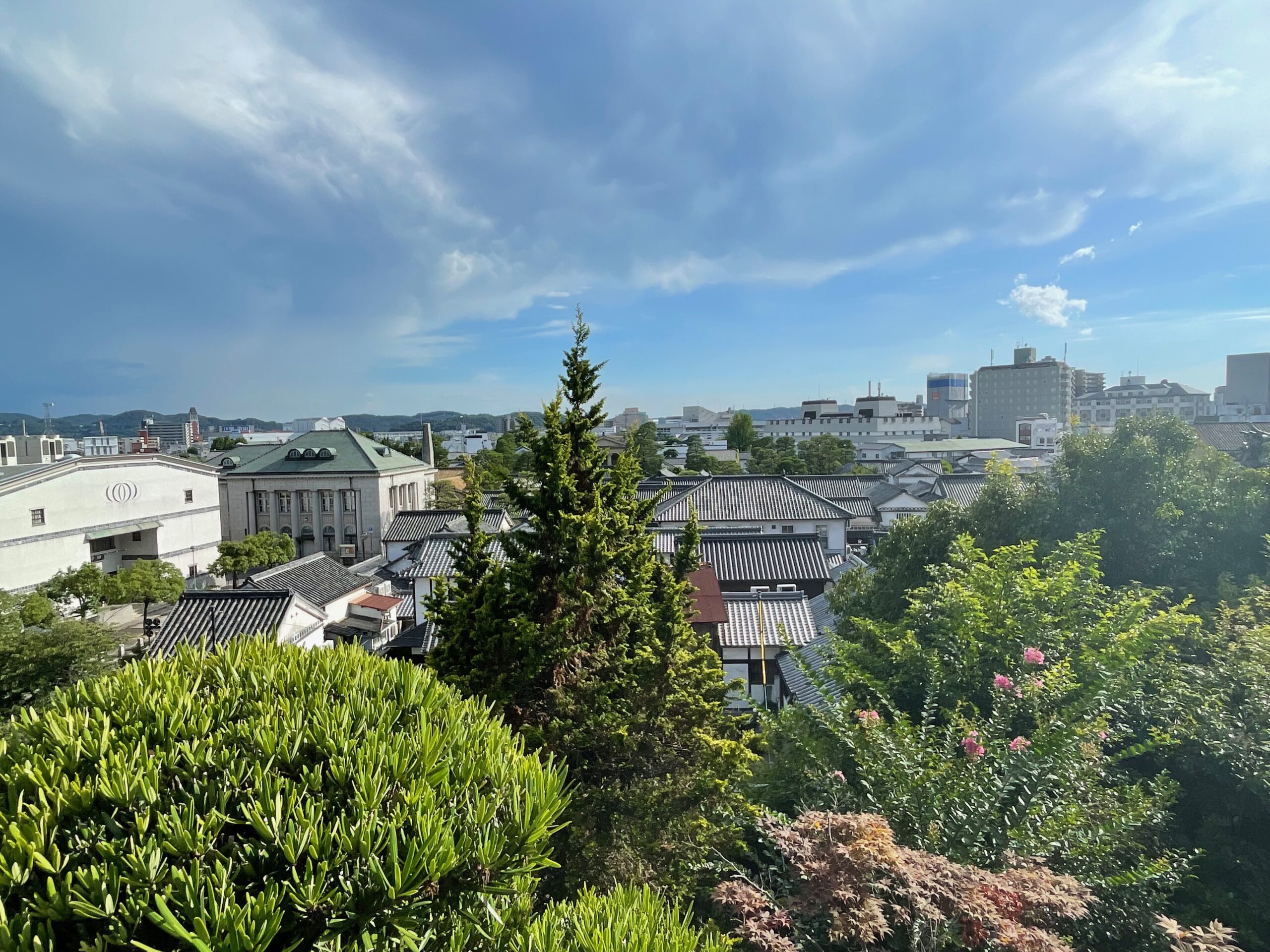 |
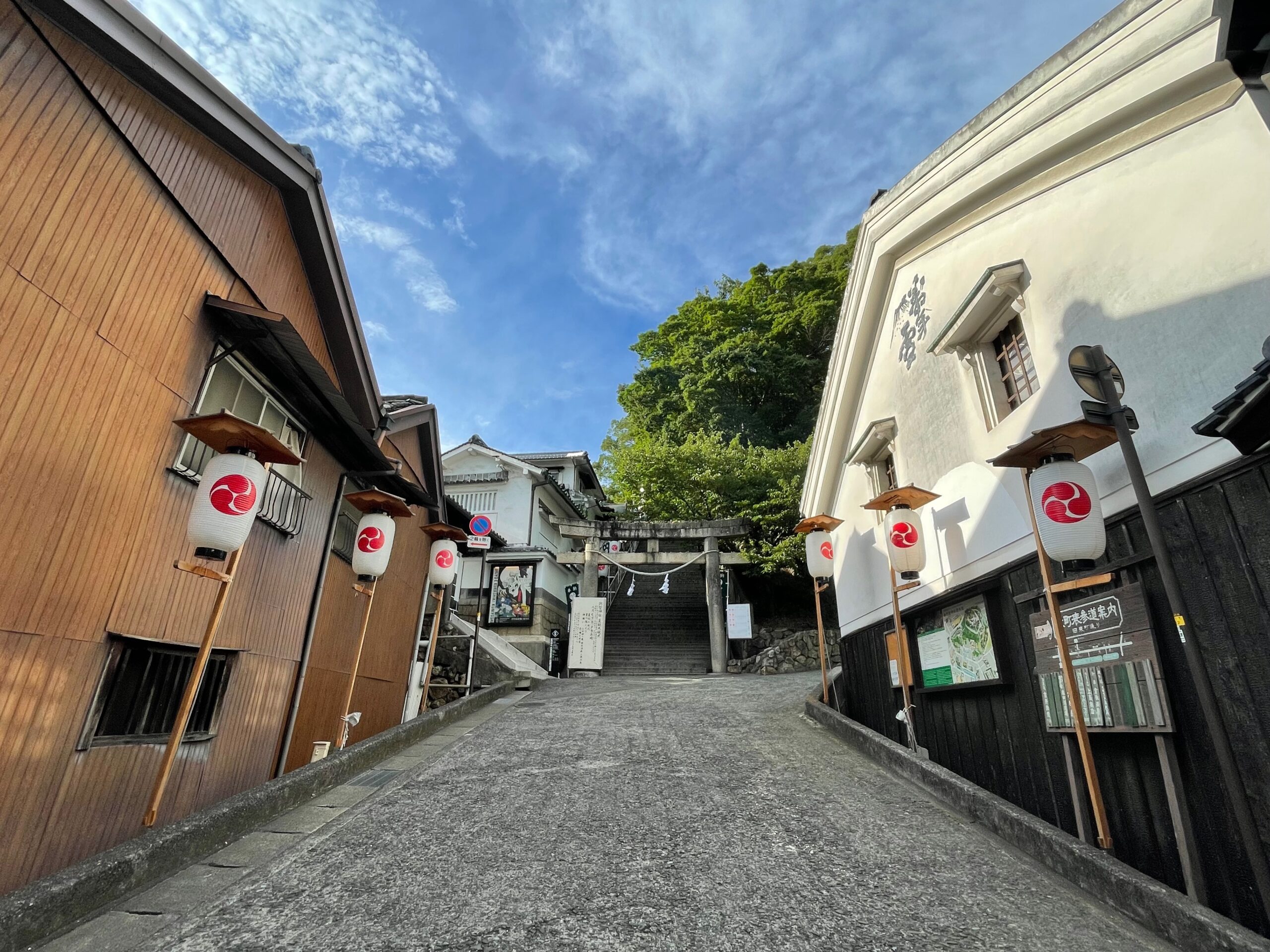 |
Apart from museums, strolls along the canals and temple visits, Kurashiki is also a good place for shopping, especially if you’re searching for high quality Japanese crafts which you can find in numerous small artisanal boutiques in Bikan Quarter.
Kurashiki is known for its indigo-dyed textiles such as scarves, clothing, and handkerchiefs. Awa-ai, or indigo dyeing, is a traditional craft in the region and the pigmented items are prized for their deep blue color and exquisite patterns. You will find many boutiques around Bikan which have such products in their offer.
Another good idea is to purchase Bizen-yaki traditional Japanese pottery which is produced in the Bizen area, which includes Kurashiki. These ceramics are known for their natural and rustic appearance, characterized by earthy colors and unique markings from the wood-fired kilns. In Kurashiki’s shops you can find Bizen pottery items like tea sets, vases, and tableware.
For a foodie-style souvenir, you can opt for kibi-dango which is a popular regional sweet made from rice flour and sugar. These small, chewy rice cakes are often sold in packages and make for a delicious gift. If you plan to bring one box back home, ask in the shop how and how long the confections can be stored before serving. Another good idea is to purchase a bottle of local sake. Okayama Prefecture, where Kurashiki is located, is known for its sake production. You can purchase locally brewed sake as a gift or to enjoy yourself. Look for Okayama’s famous brands like “Koshi no Kanbai” and “Dassai.”
Finally, Bikan is a good area to search for variety of traditional Japanese handicrafts, including wooden dolls, lacquerware, and paper lanterns. These make unique and culturally significant gifts, in Kurashiki’s artisanal shops you can find high quality with exquisite aesthetics.
Personally, I found a beautiful shop specializing in tenugui. Those are traditional Japanese cotton towels that have been a staple of the Japanese home since the 9th century. Nowadays, tenugui have their renaissance all over Japan mainly due to the fact that they’re multi-purpose cloths and often with a beautiful patterns, some of the towels have so sublime ornamentation than they look more as a piece of art! Tenugui can be as used everyday as hand towels, dishcloths, and washcloths, more beautiful ones are sometimes put in frame and serve as a room decoration. There are even whole articles and websites devoted to tenugui and different ways of using them. Even if Kurashiki is not particularly known for tenugui production, I purchased 2 towels from a boutique in Bikan which had really good patterns. Maybe that’s just me, but I was so enchanted by tenuguis that I brought one or two towels from almost every town in Japan I visited this time!
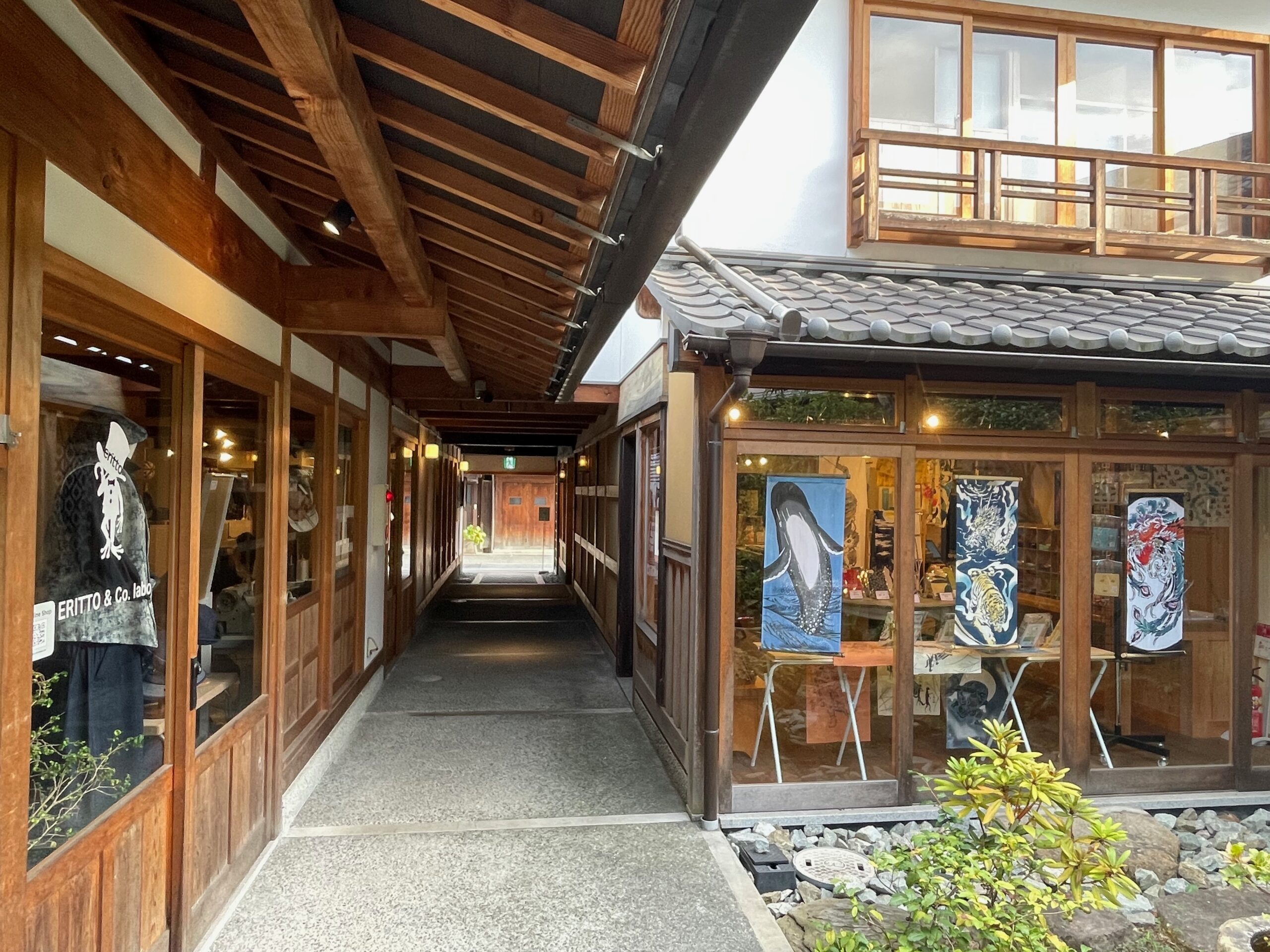 |
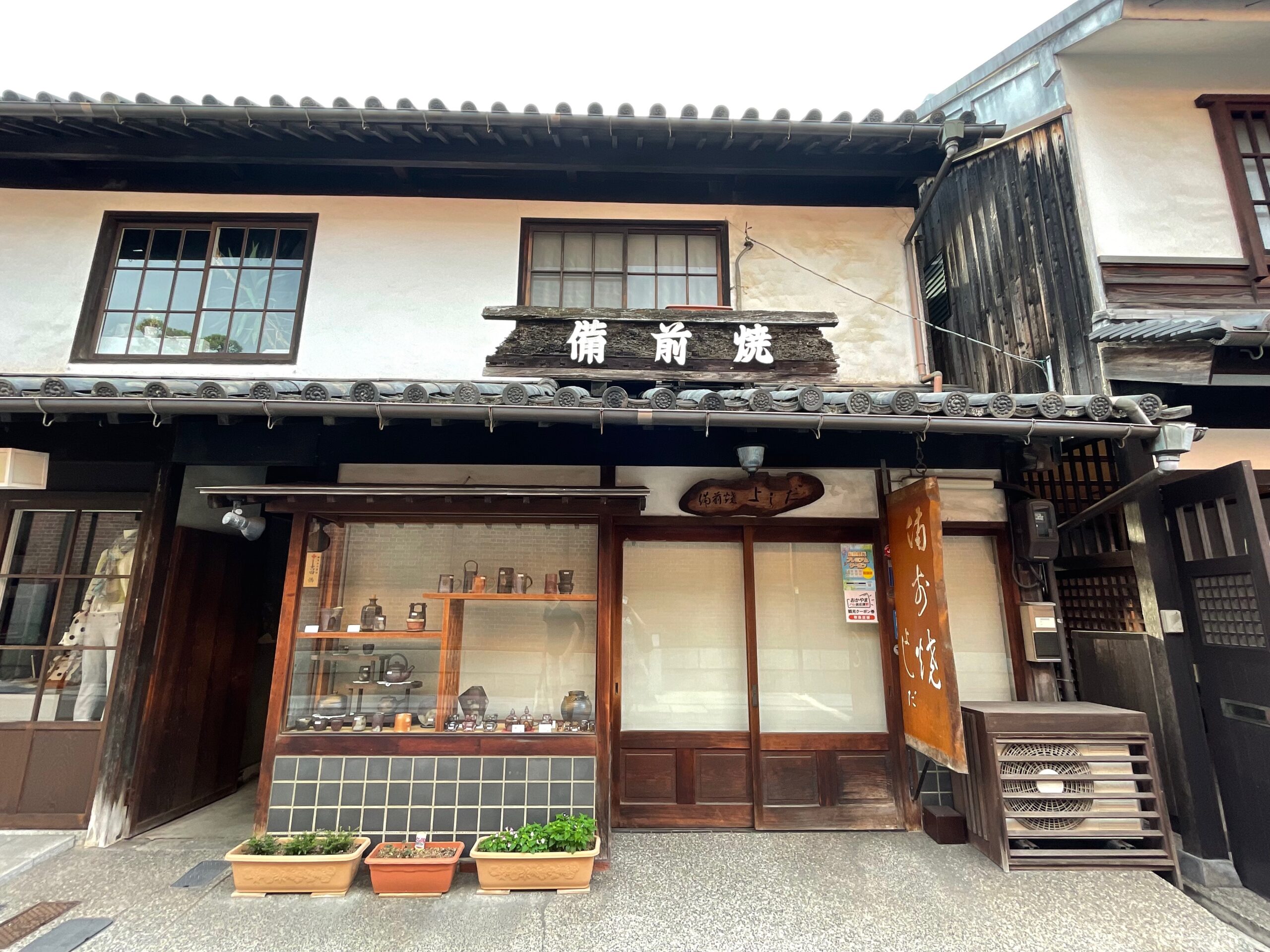 |
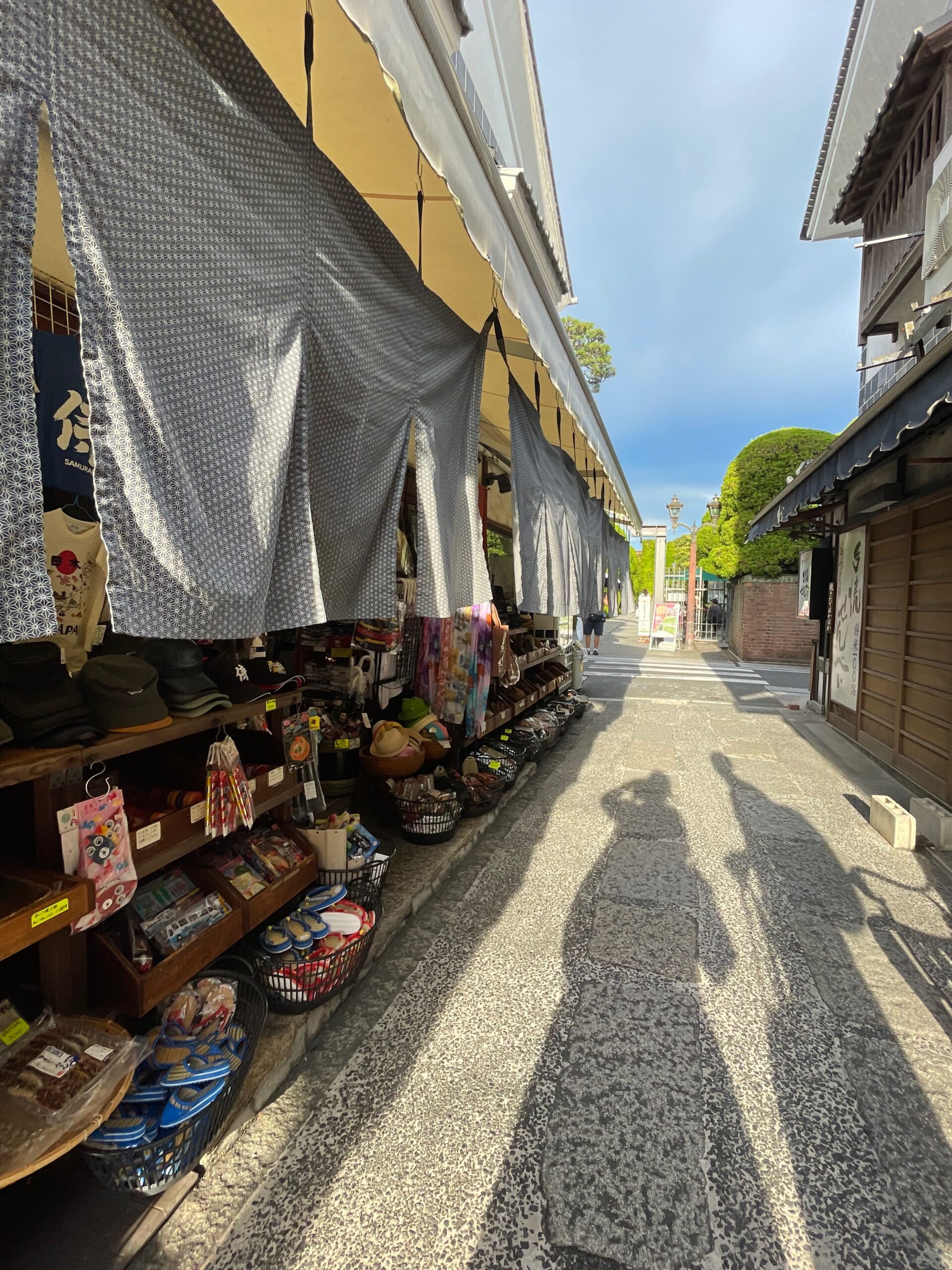 |
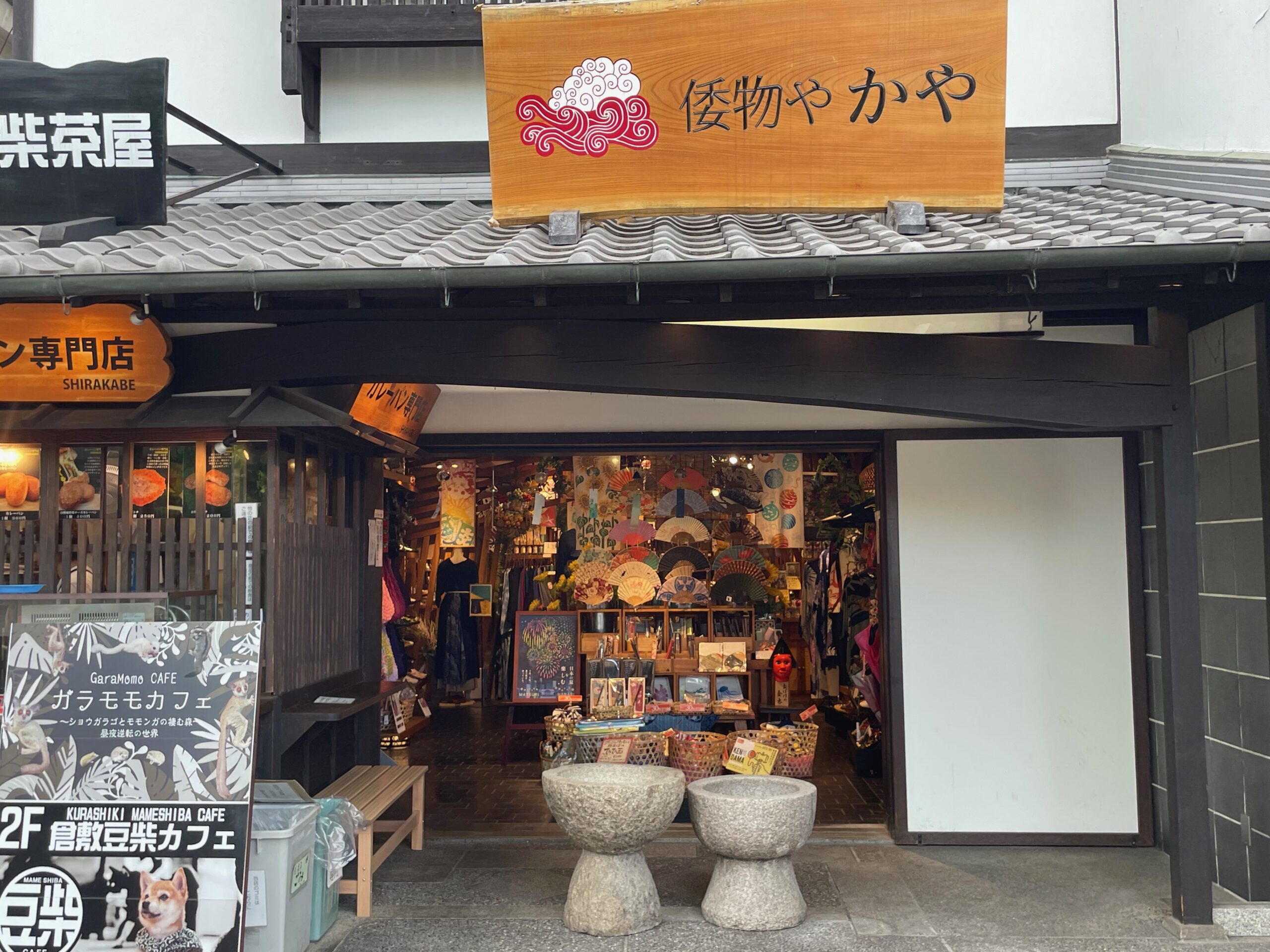 |
Bikan area is also full of small charming cafés, restaurants and teahouses. If you want to try some of the regional cuisine in different part of Japan, in Kurashiki you can try many local specialties typical for Okayama region. One of the dishes is barazushi which is a type of sushi prepared in the Okayama region. It features vinegared rice topped with various ingredients, including sliced raw fish, cooked seafood, and vegetables. What makes it unique is the scattered or “bara” presentation, where the toppings are spread across the rice. You can also opt for Okayama-style yakisoba, Kurashiki ramen and mentioned before local sake and kibi-dango sweets. For a street food style snacks, order Hiruzen yakitori (grilled chicken skewers). The region is also known for its delicious peaches.
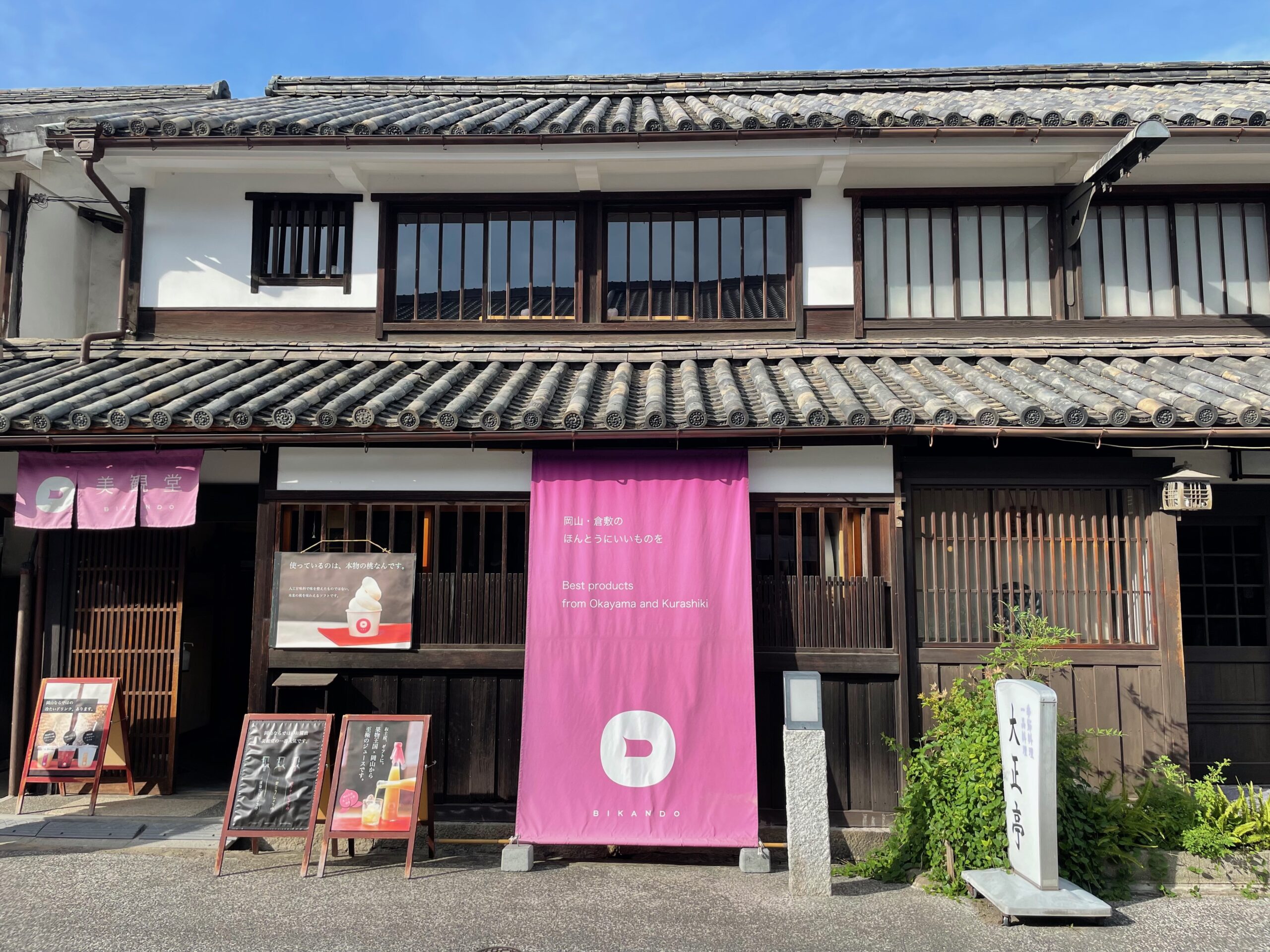 |
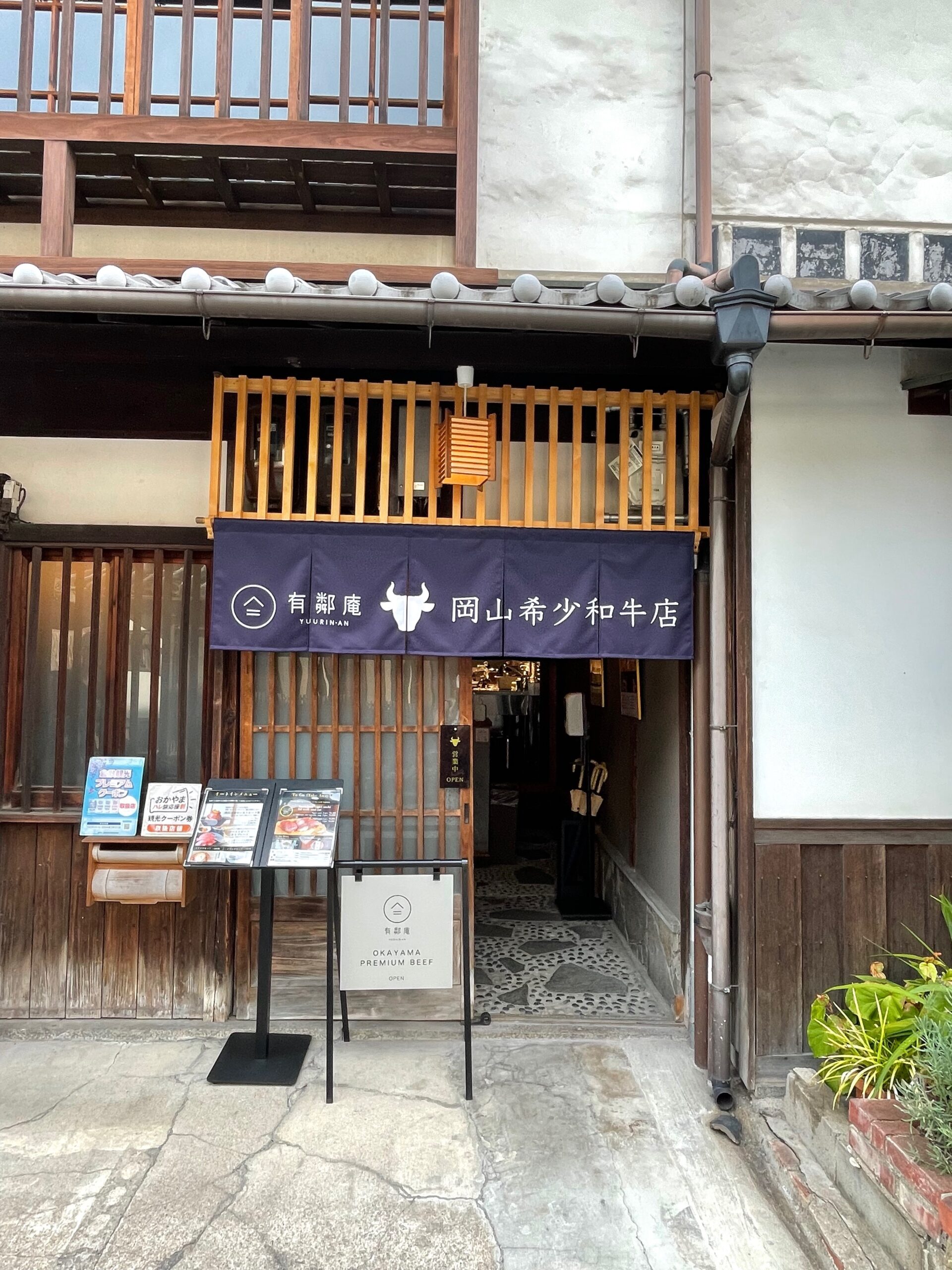 |
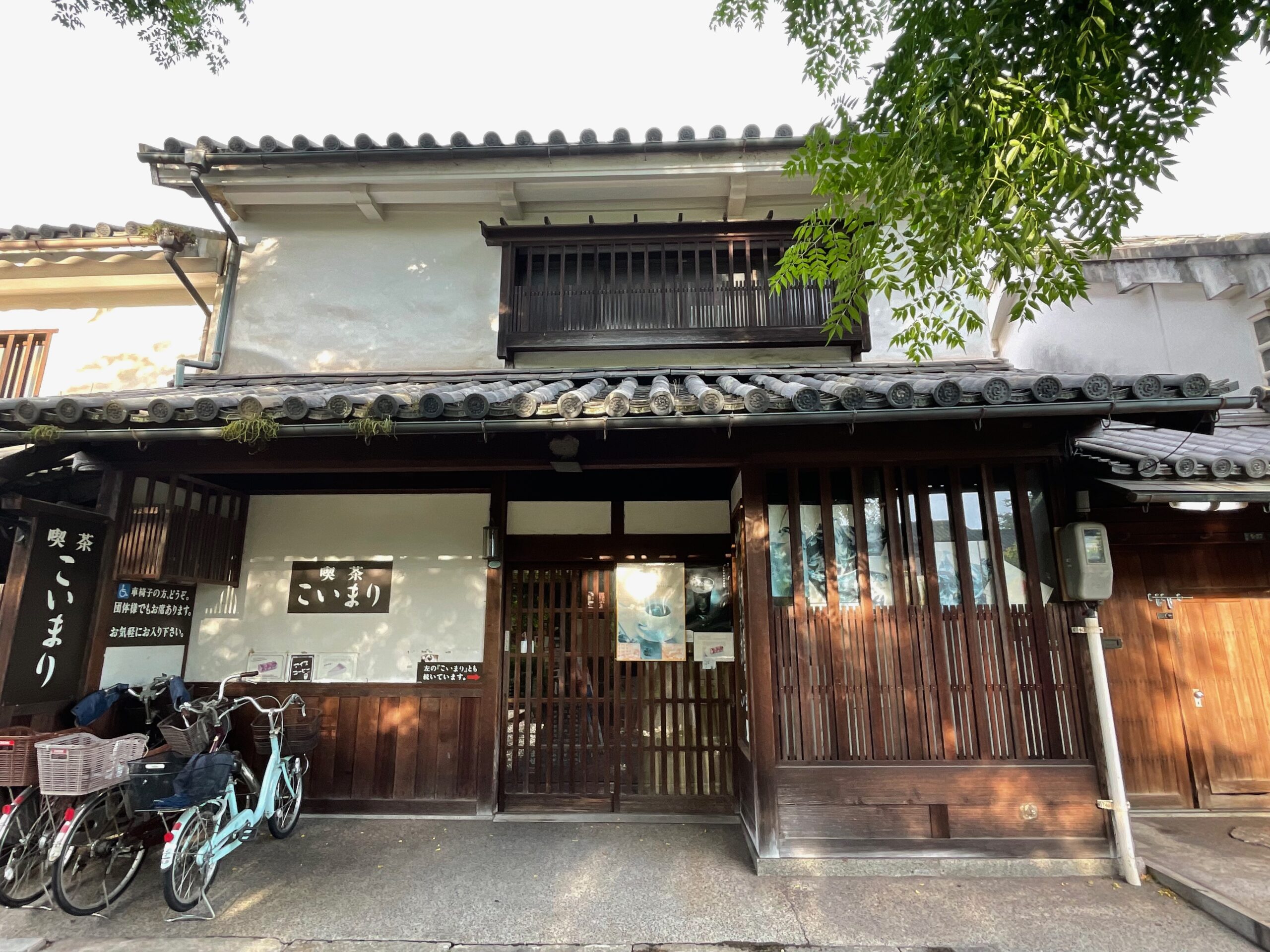 |
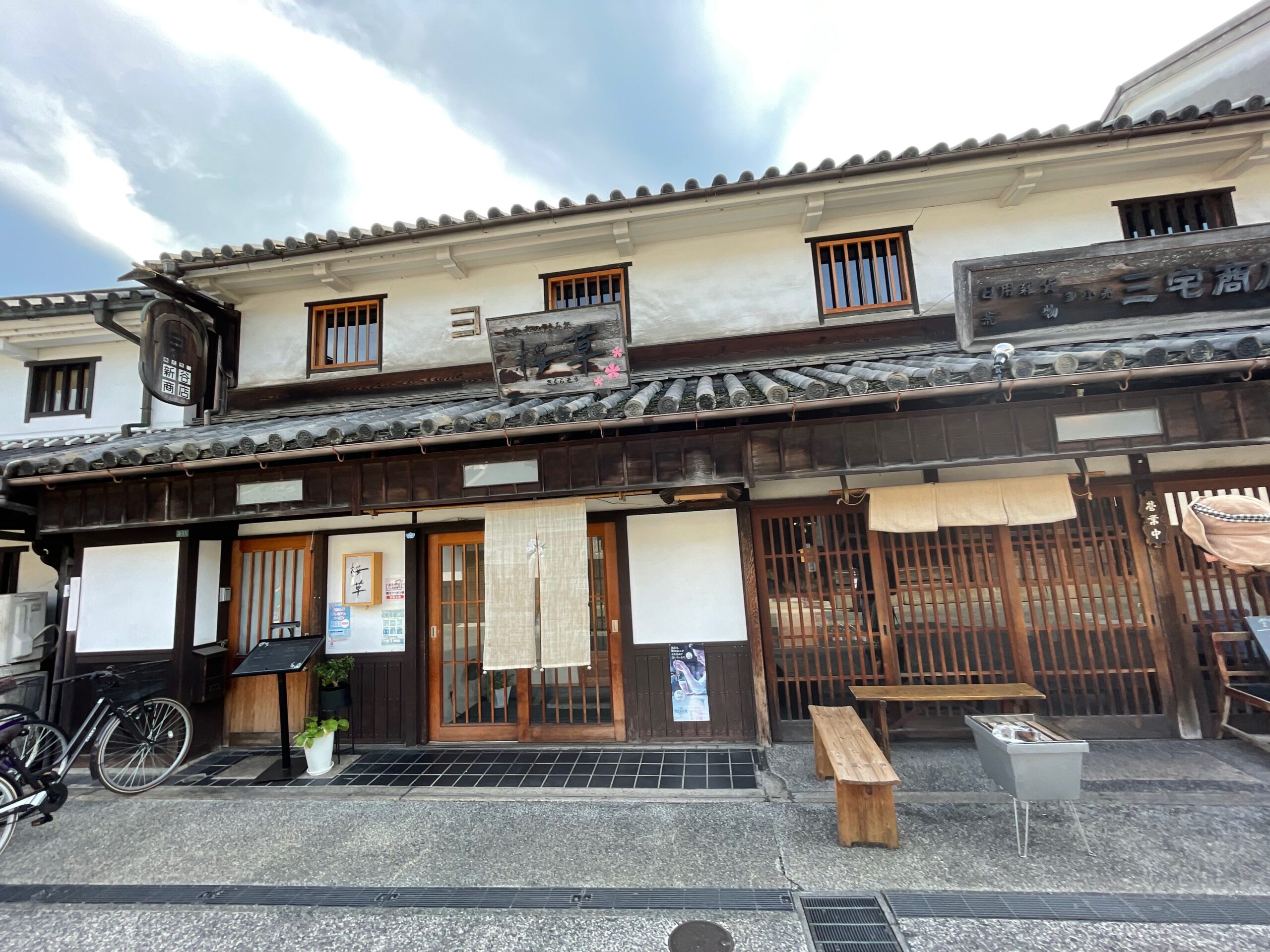 |
Note that with shops closing around 6-7pm, the town get significantly emptier, most of the visitors depart just after sunset, so if you want to enjoy a quiet stroll without crowds, I recommend to stay until later evening. Restaurants in Bikan area remain open until 10pm so some nice dinner with Okayama regional dishes can be a nice conclusion. Just before switching your phone off to fully enjoy the local delicacies, check out the last trains departures to Okayama and/or further connections if you chose Kurashiki just for a one day trip.
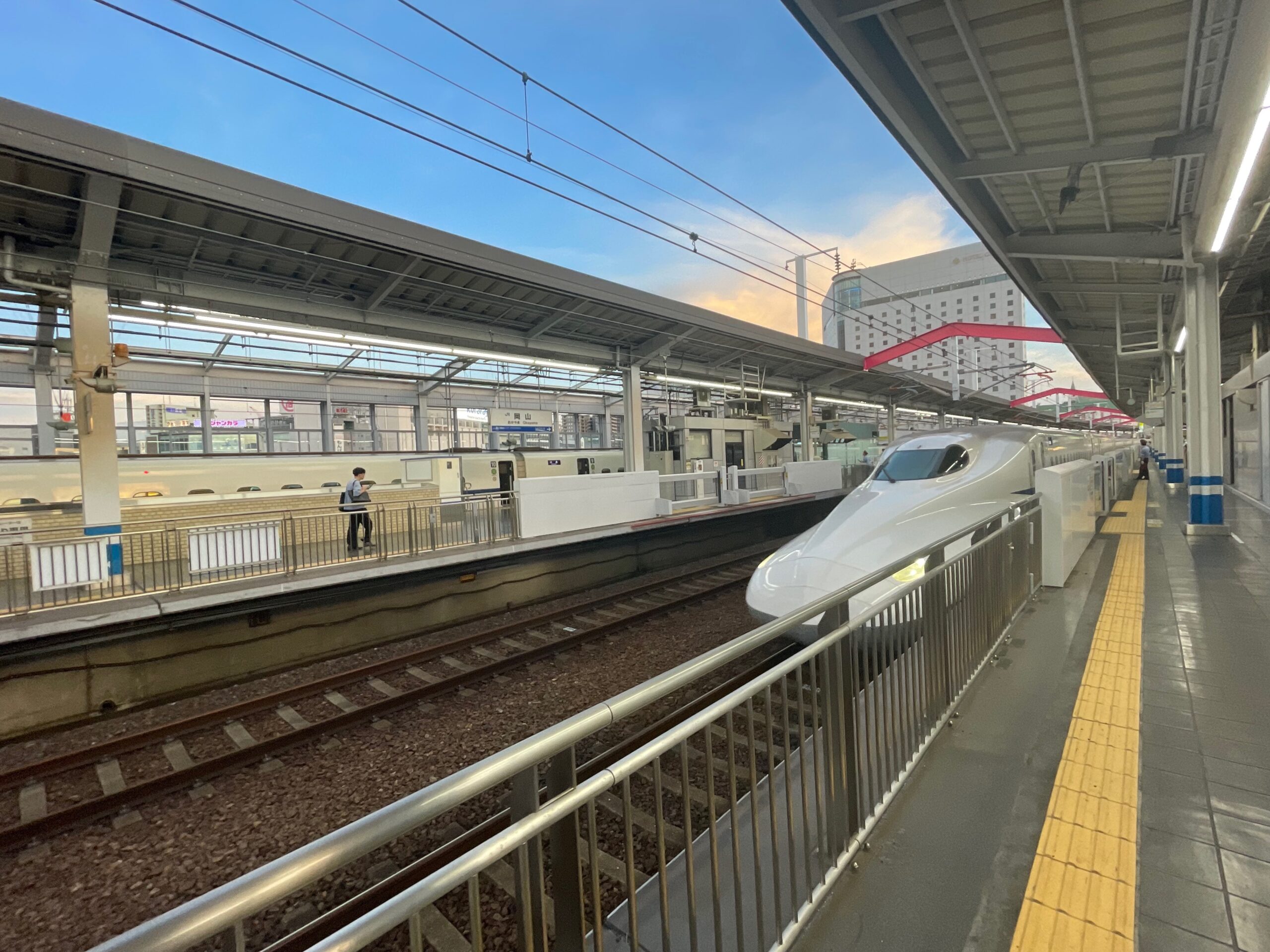 |
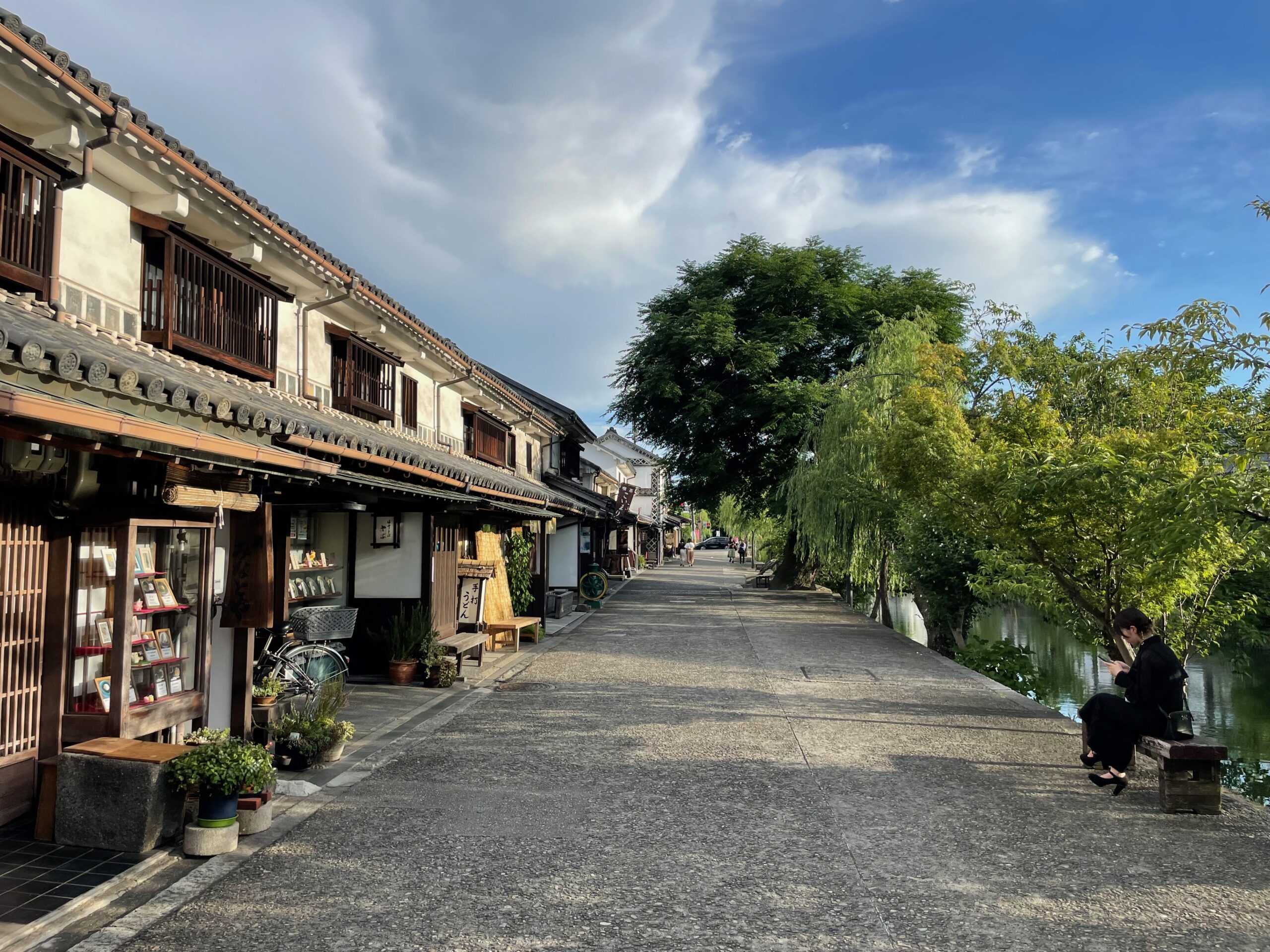
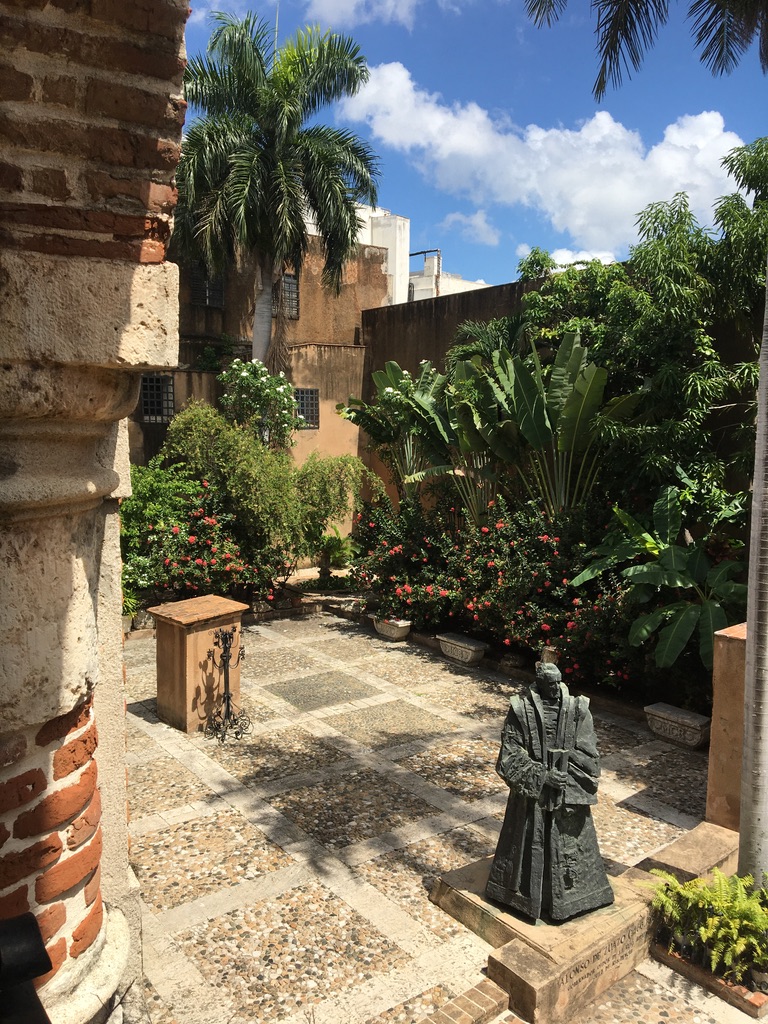
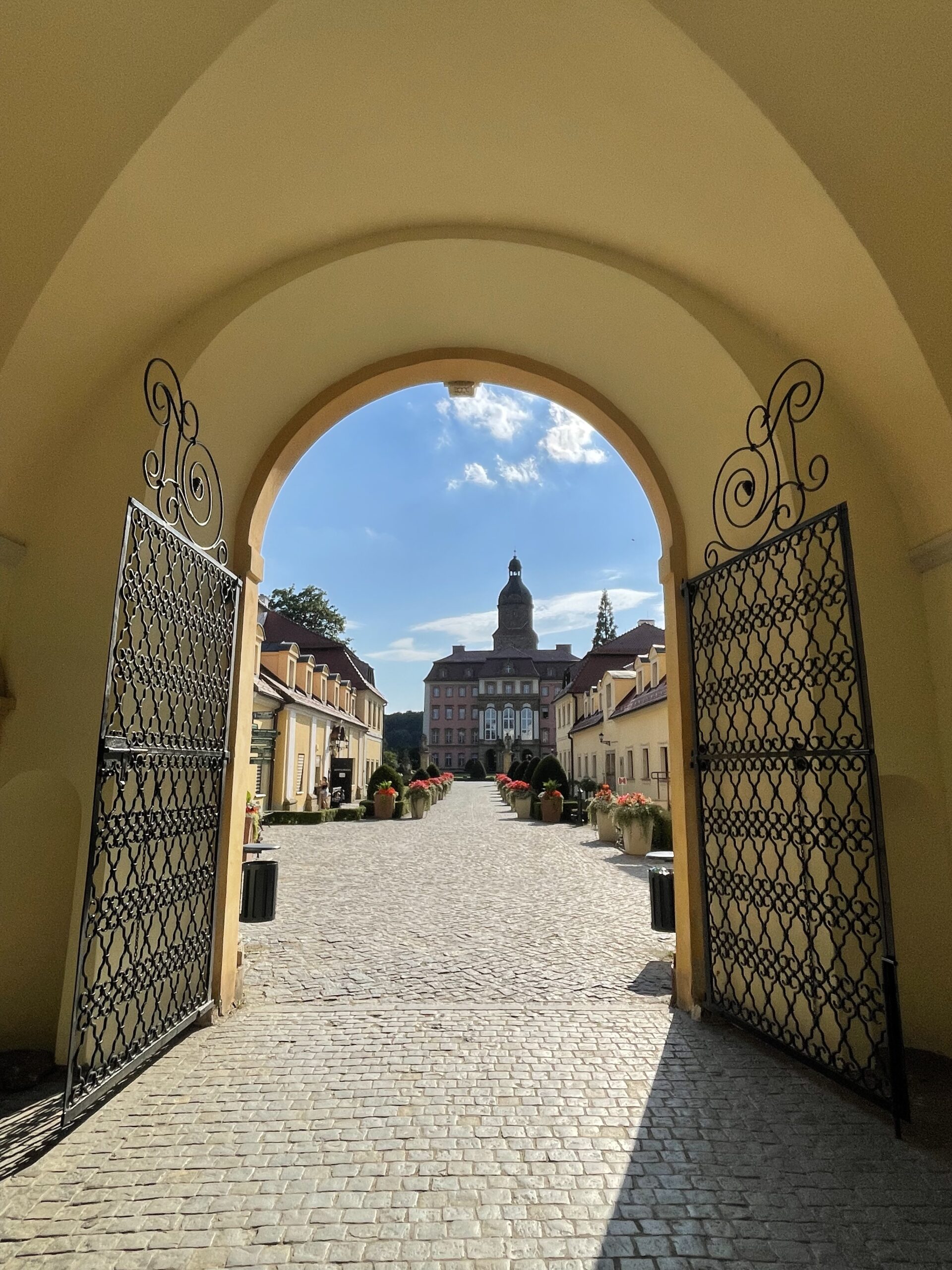
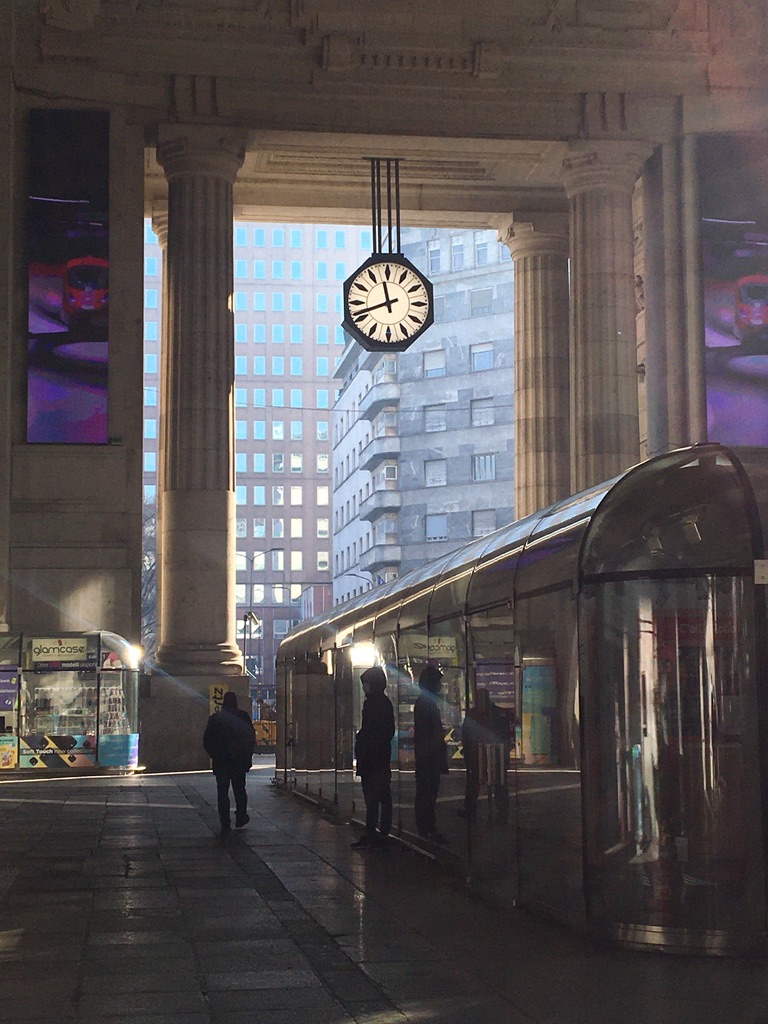
The town is enchanting <3 Small and cozy and I'd love to get lost in one of those small streets 🙂
Hi! Nice post. Do you plan to write a souvenir guide for Japan? would be super helpful!
Hi Adam, I was thinking about it 😉 However, my problem is that such guide should have around 1000 items or even more 😉
Japan has just such an abundance of incredible products! So no guide for now 🙂
Oh, so the town is on the JR pass, right? I’ve done some Edo towns and plan to visit Kurashiki next time, the channels look really cool!